Ho Chi Minh City (Saigon) - 2007
I had a 4-week Indochina trip in May-June 2007.
(Melbourne – Bangkok – Thailand – Laos - Vietnam - Cambodia -Thailand – Bangkok - Melbourne)
We flew from Hoi An to Ho Chi Minh City.
Ho Chi Minh City has gone by several different names during its history, reflecting settlement by different ethnic, cultural and political groups. It was originally a trading port city of the Khmer Empire known as Prey Nokor.
In time, under the control of the Vietnamese, it was officially renamed Gia Dinh,
a name that was retained until the time of the French conquest in the 1860s, when it adopted the name Sài Gòn, westernized as Saïgon.
The current name, Ho Chi Minh City, was given after the fall of Saigon in 1975.
With a population of 15 million it is the most populous city in Vietnam.
Ho Chi Minh City is the financial centre of Vietnam and is the headquarters of many national and international banks and companies.

There are some fine buildings in the heart of Saigon.
After we arrived in Saigon we went on a cyclo ride to have a look at some of them.

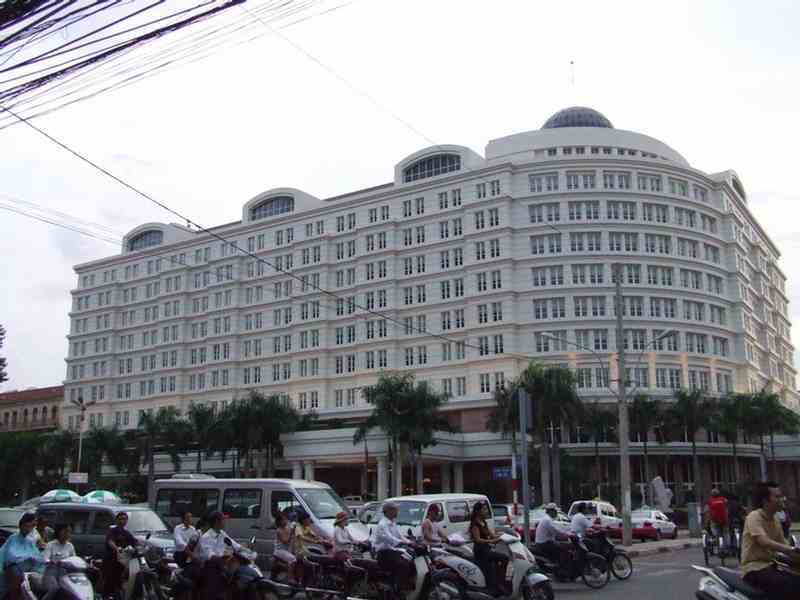
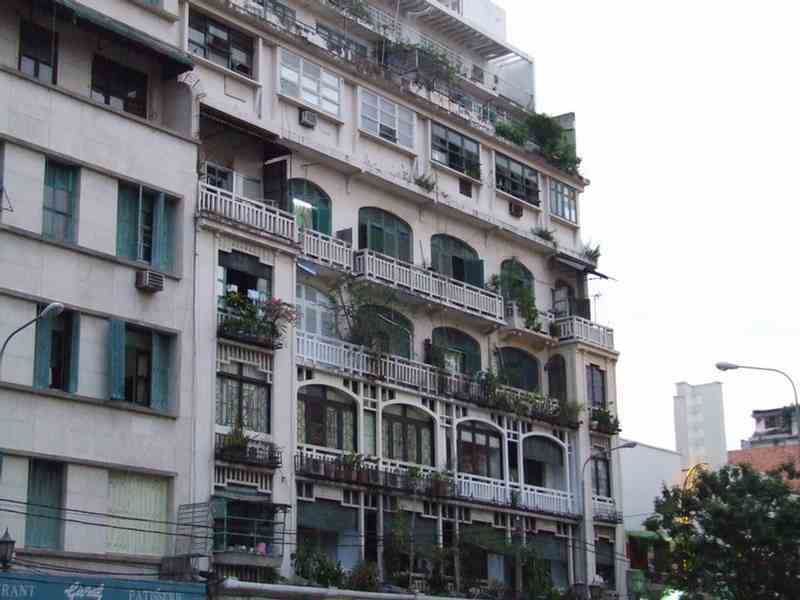
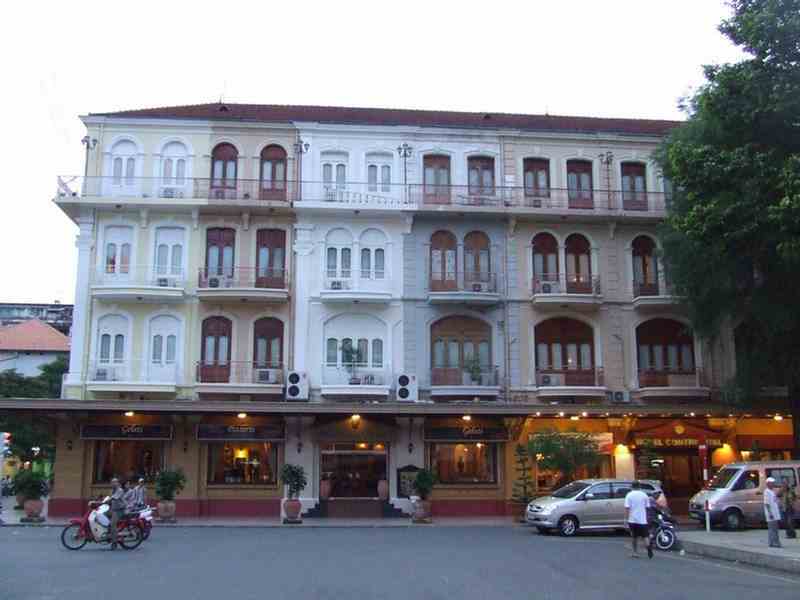
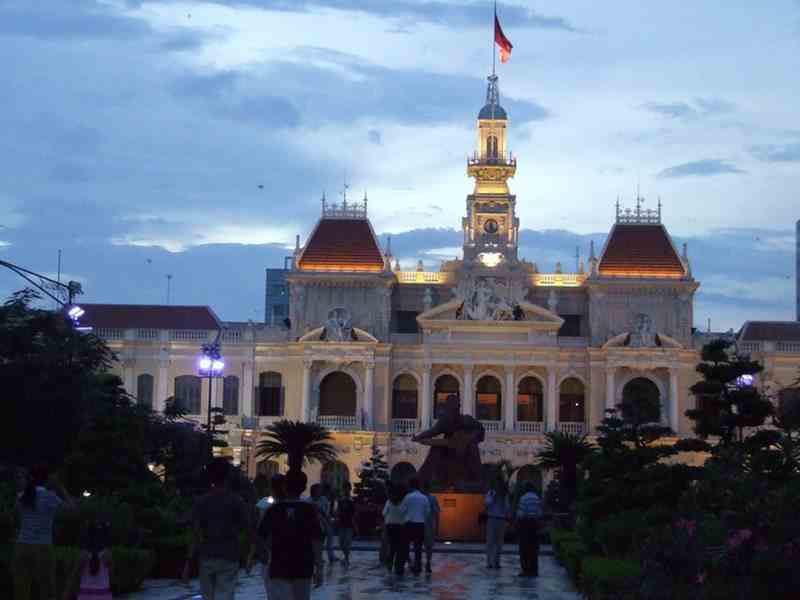
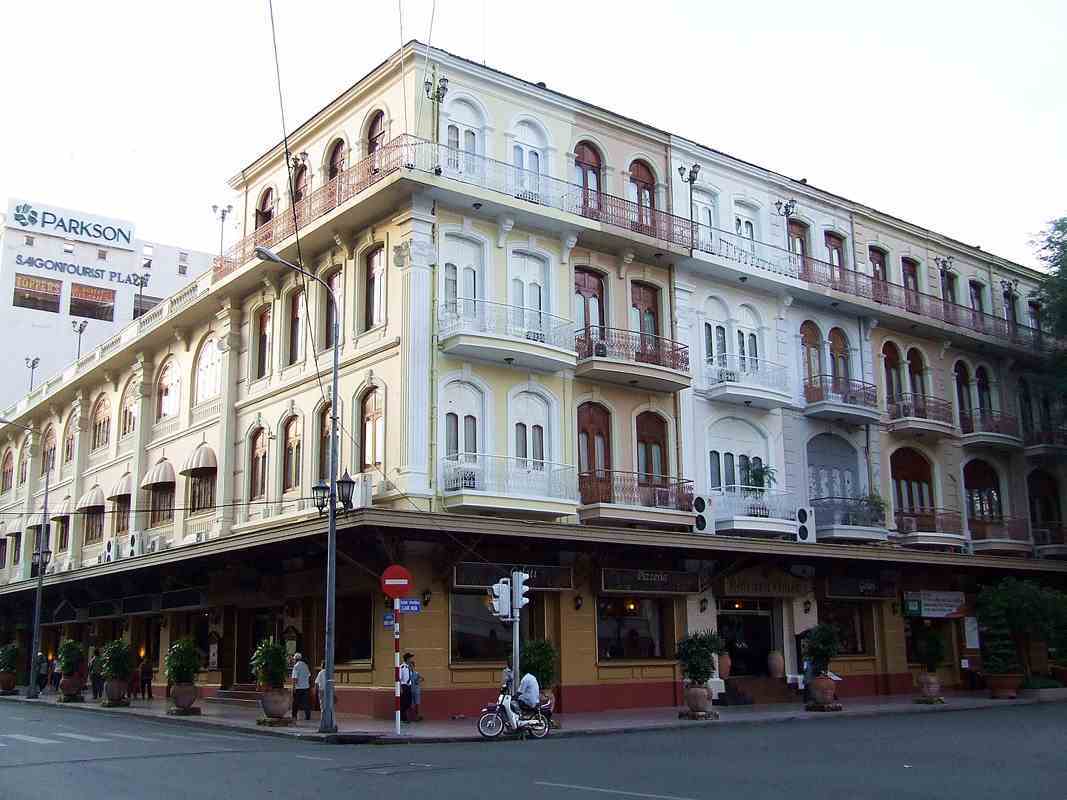
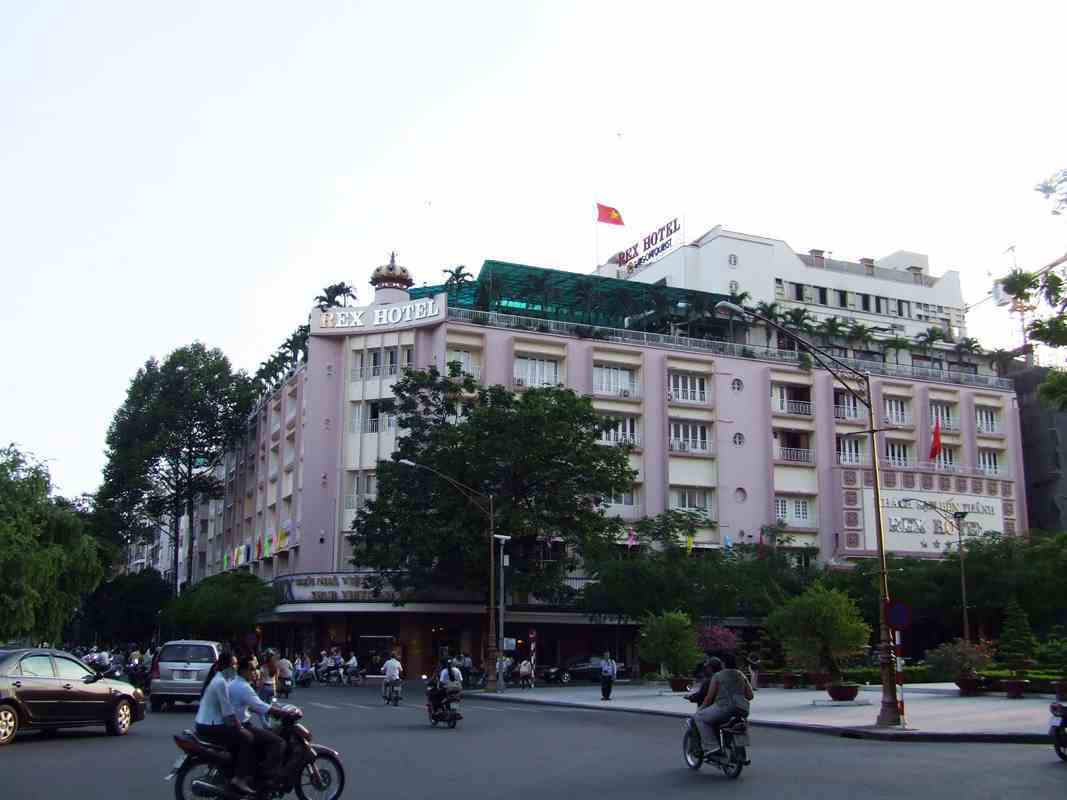

Saigon Opera House ( Now the Ho Chi Minh Municipal Theatre)
This magnificent building was built at the turn of the 20th century as a classical opera house to entertain French colonists.
The building was renovated in the 1940s, only to be badly damaged by bombers in 1944. A shelter for refugees after
the Geneva Accord split the country at the 17th Parallel in 1954, the building would briefly house the parliament before
falling under first private, and ultimately state, hands (after reunification) as an opera house and theatre.
The three-story interior houses some 1,800 seats.
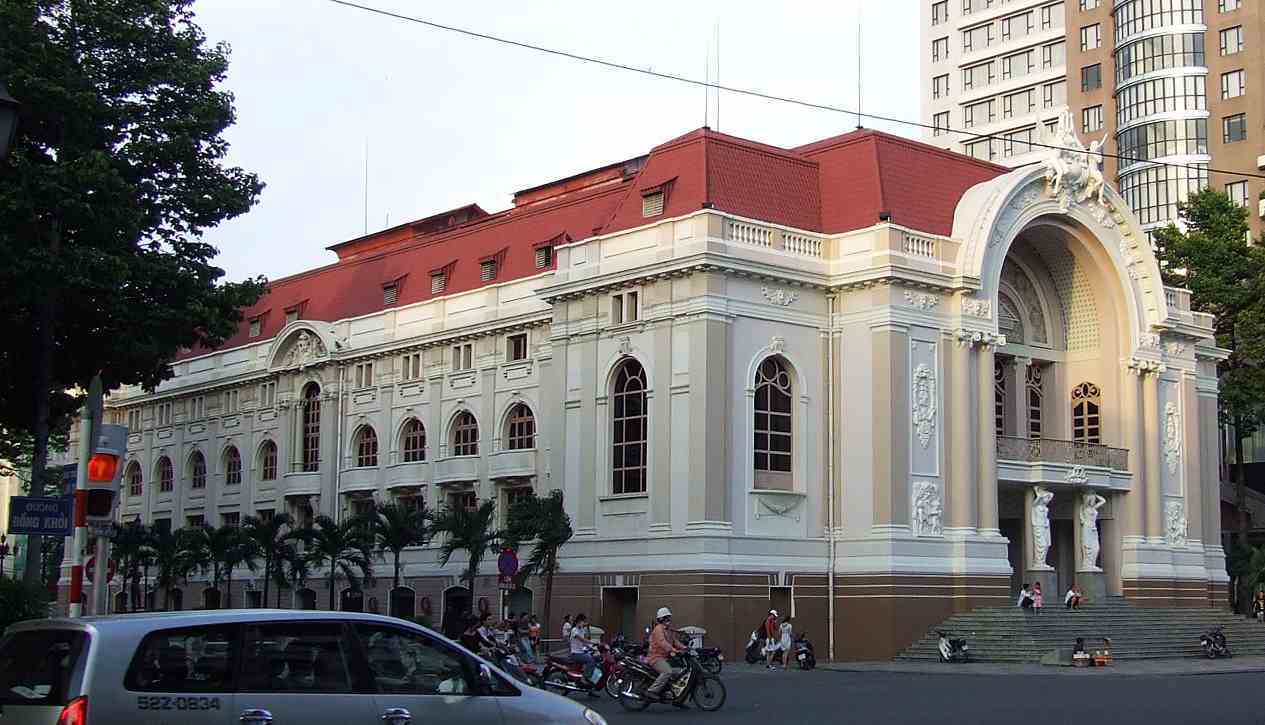
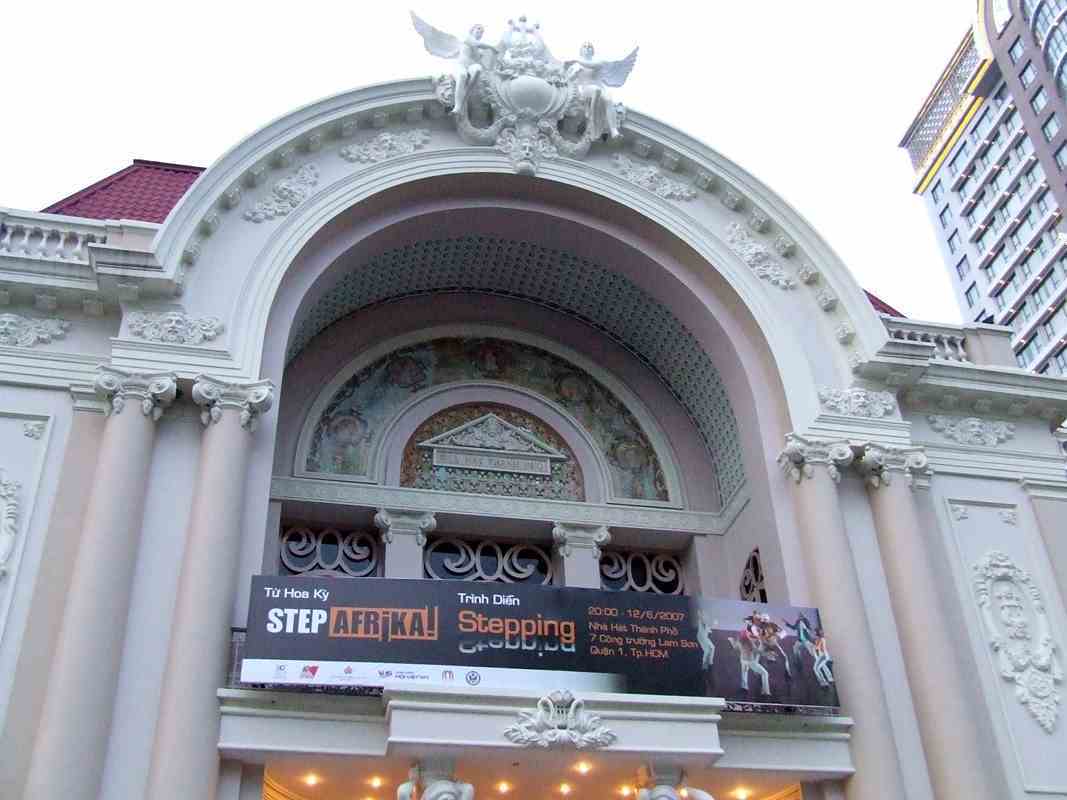
The Cambodian borderThe Cambodian border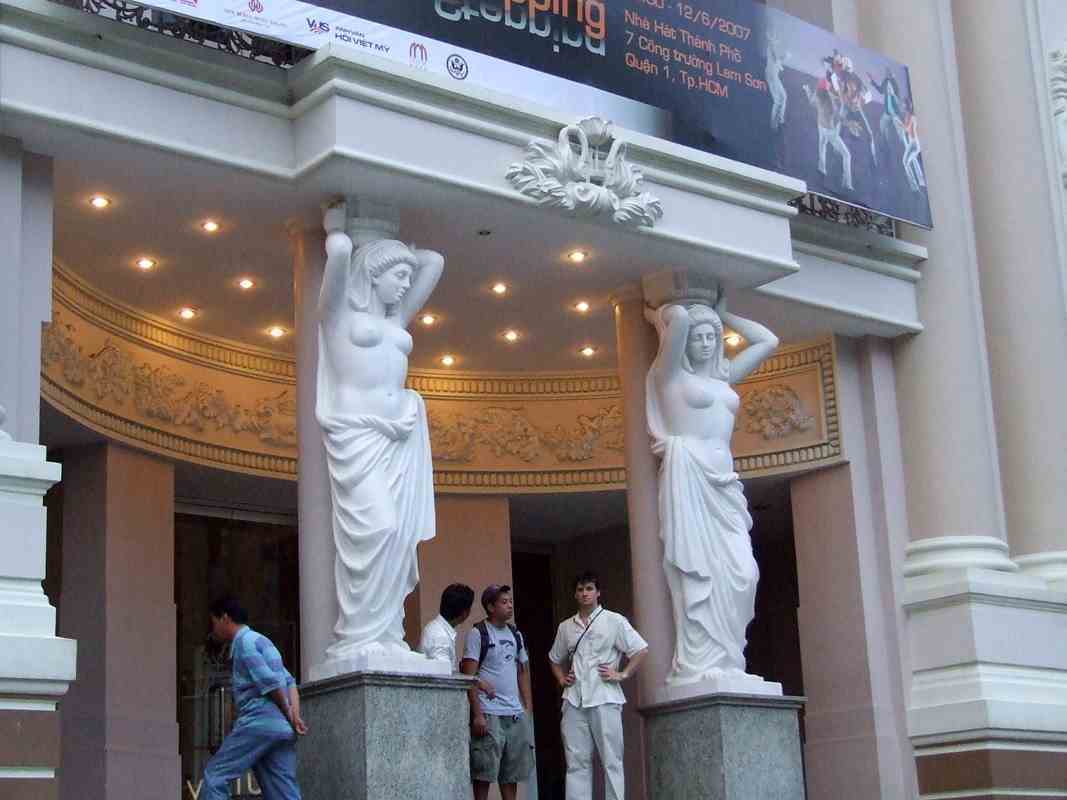
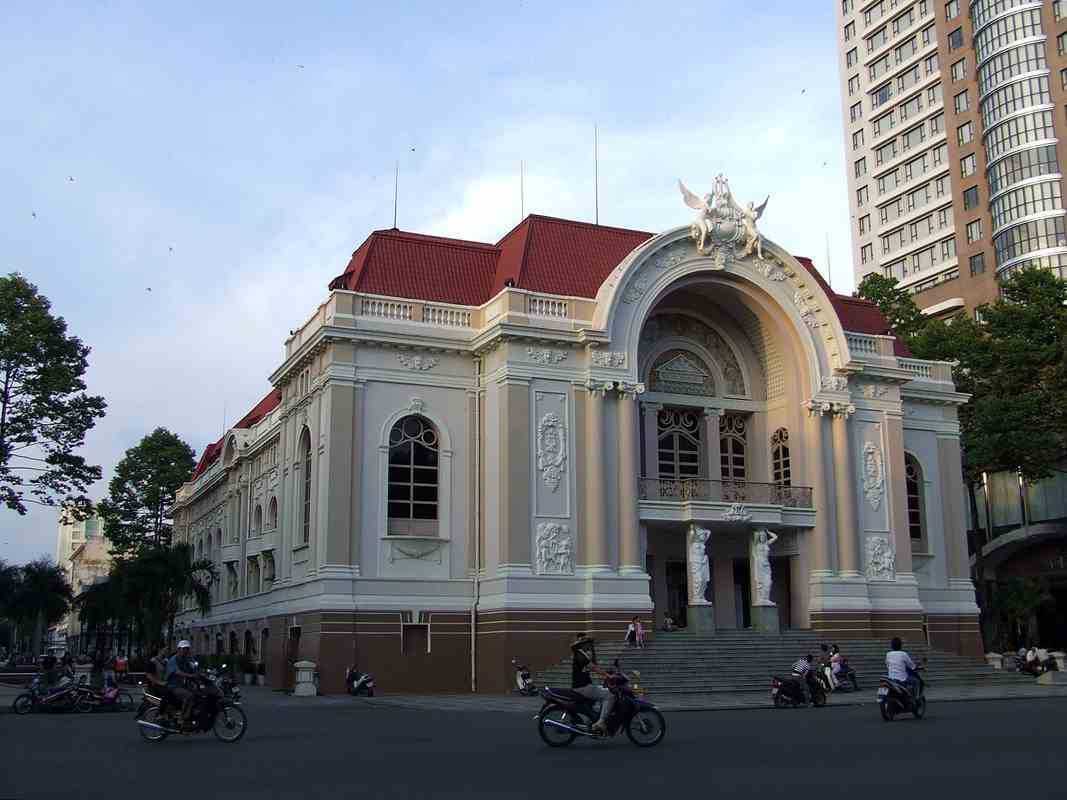
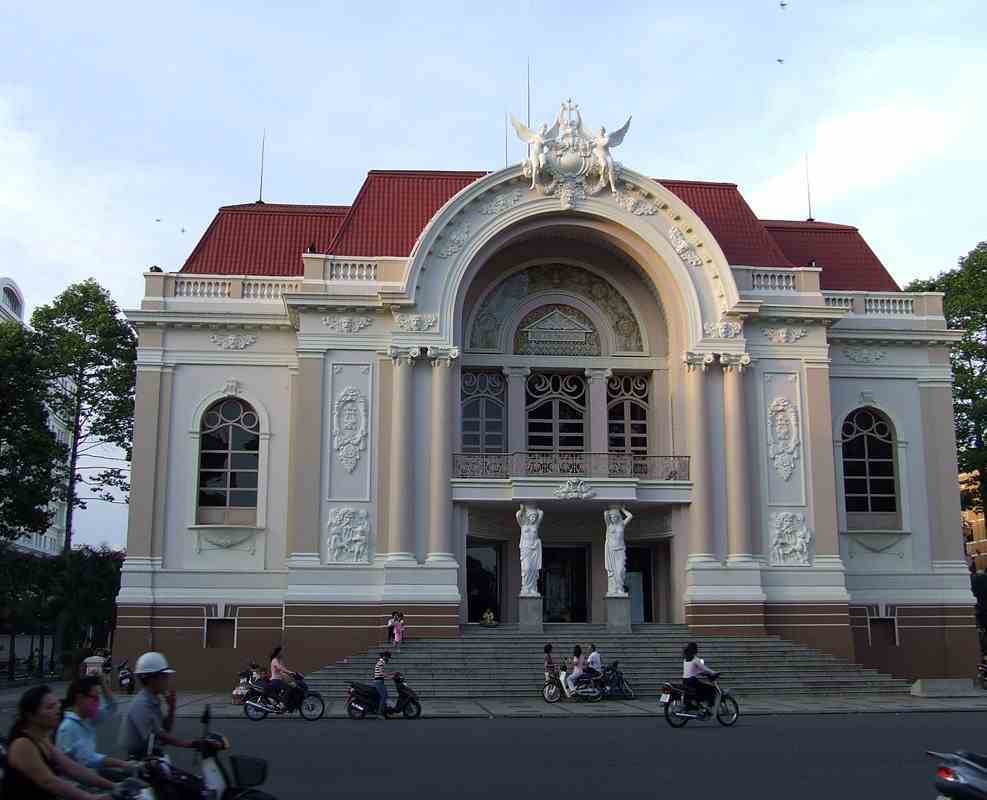
The Central Post Office (or Buu Dien Truong Tam) is built like an old fashioned railway station.
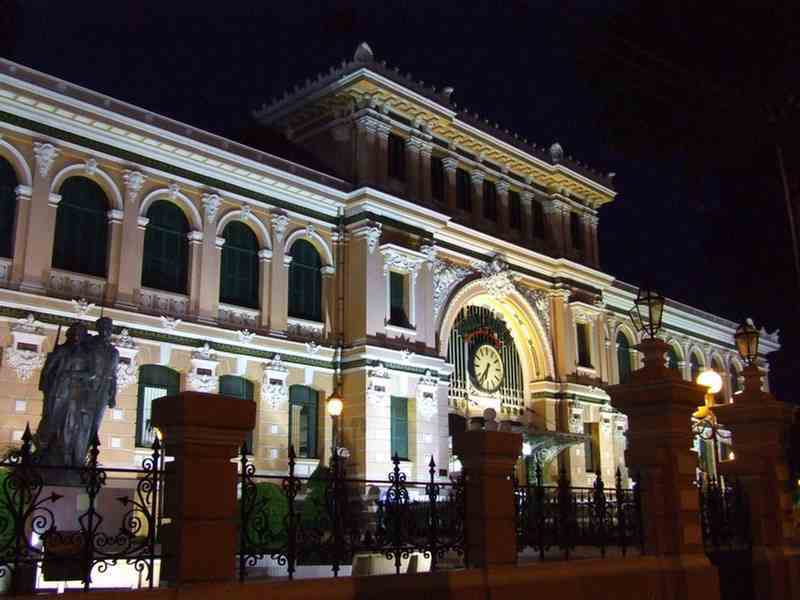
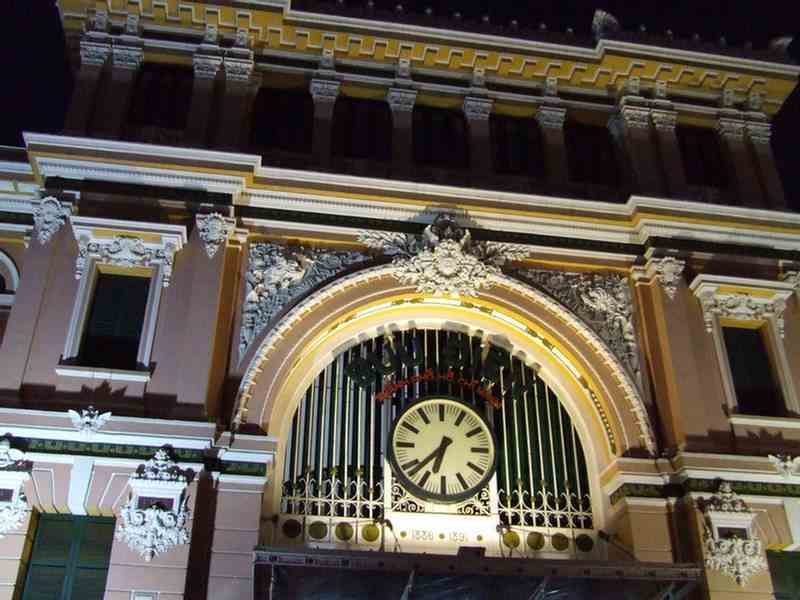
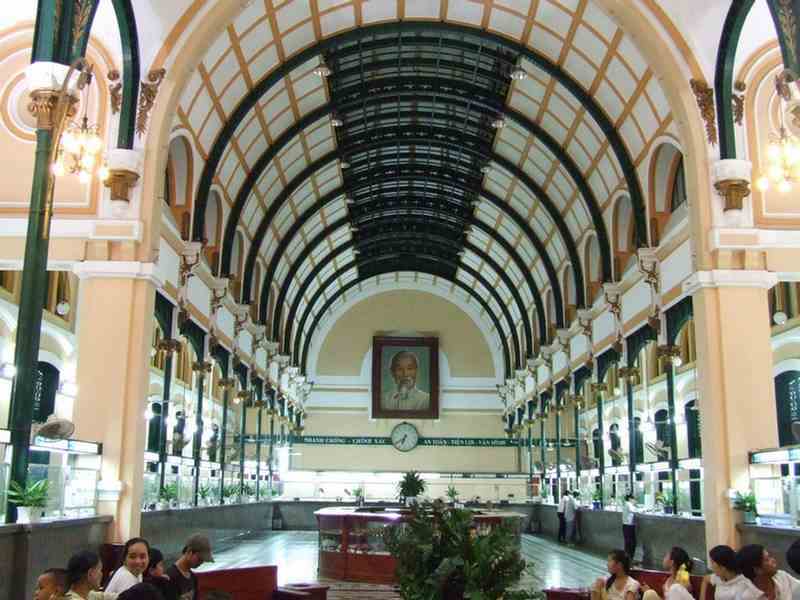
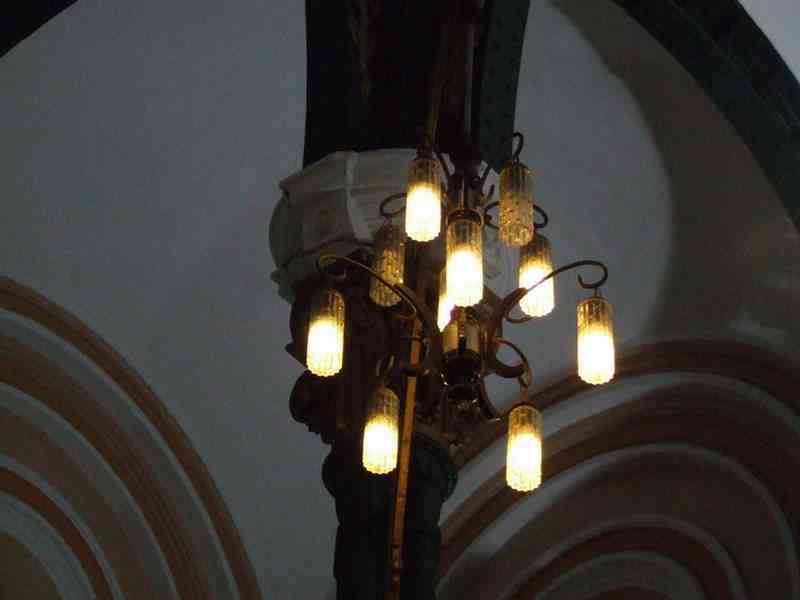
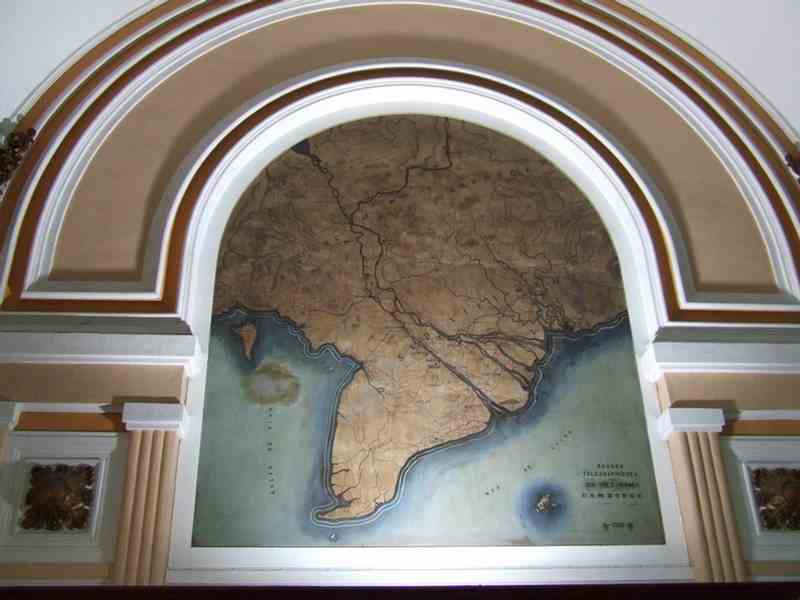
The Rex Hotel
This was where the journalists were briefed at 5pm each day during the Vietnam War.
(Five o'clock follies)
The journalists used to watch the passing parade from the open bar on the top floor.
We had a cocktail there to celebrate history. I had a Saigon Cocktail - $3.50 - very citrus.
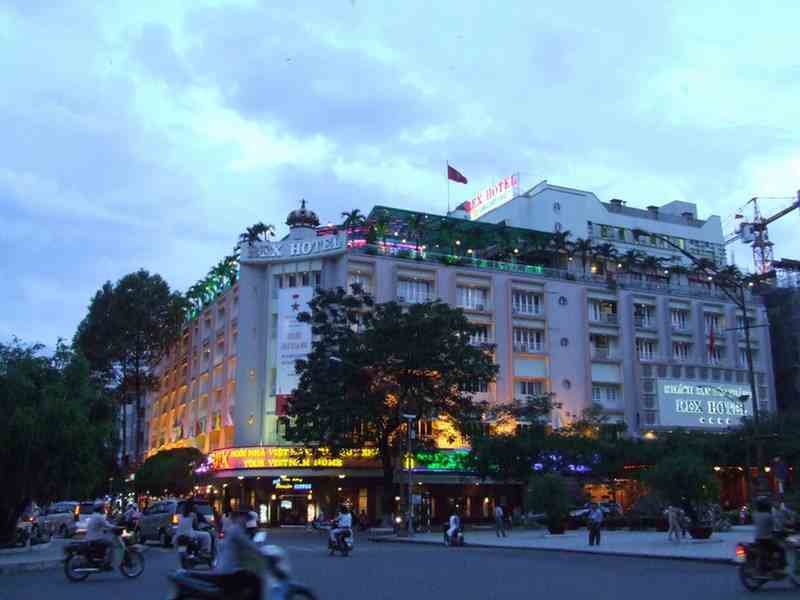
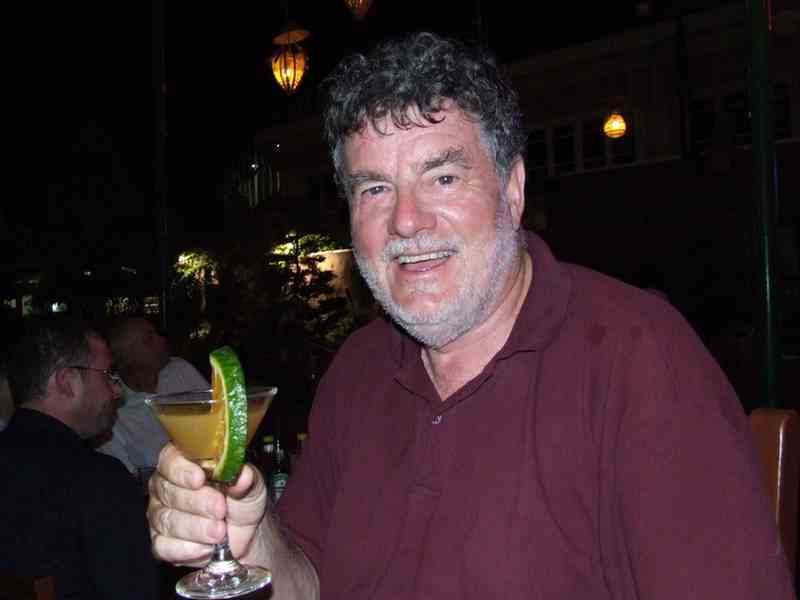
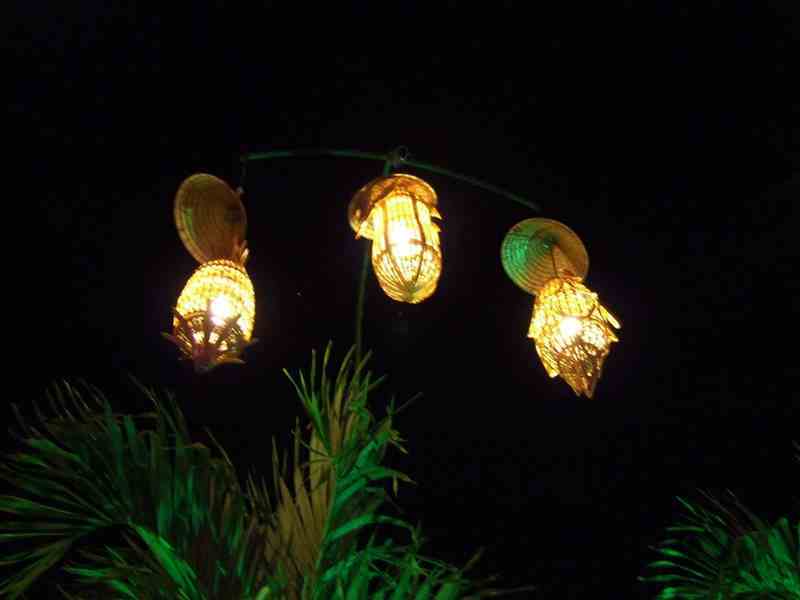
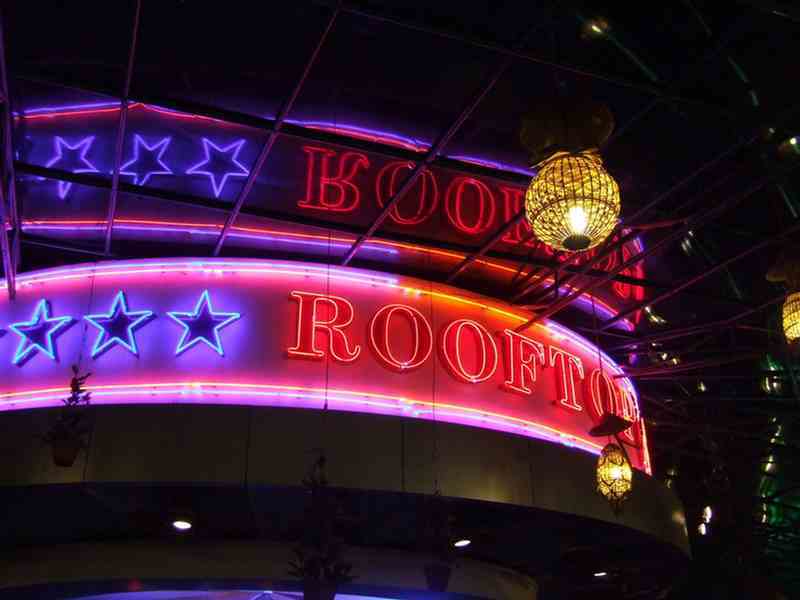


Cu Chi Tunnels
The tunnels of Củ Chi are an immense network of connecting underground tunnels located in the Cu Chi district about 70km
from Ho Chi Minh City. They are part of a much larger network of tunnels that underlie much of the country.
The Củ Chi tunnels were the location of several military campaigns during the Vietnam War, and were the National Front for the Liberation of South Vietnam's base of operations for the Tet Offensive in 1968.
The tunnels were used by NLF guerrillas as hiding spots during combat, as well as serving as communication and
supply routes, hospitals, food and weapon caches and living quarters for numerous guerrilla fighters.
In the beginning, there was never a direct order to build the tunnels; instead, they developed in response
to a number of different circumstances, most importantly the military tactics of the French and U.S.
The tunnels began in 1948 so that the Viet Minh could hide from French air and ground sweeps.
Each hamlet built their own underground communications route through the hard clay, and over the years,
the separate tunnels were slowly and meticulously connected and fortified.
By 1965, there were over 200 kilometers of connected tunnels. As the tunnel system grew, so did its complexity.
Sleeping chambers, kitchens and wells were built to house and feed the growing number of residents and
rudimentary hospitals created to treat the wounded.
Most of the supplies used to build and maintain the tunnels were stolen or scavenged from U.S. bases or troops.
For the NLF, life in the tunnels was difficult. Air, food and water were scarce and the tunnels
were infested with ants, poisonous centipedes, spiders and mosquitoes.
Most of the time, guerrillas would spend the day in the tunnels working or resting and
come out only at night to scavenge supplies, tend their crops or engage the enemy in battle.
Sometimes, during periods of heavy bombing or American troop movement, they would be forced
to remain underground for many days at a time.
Sickness was rampant among the people living in the tunnels, especially malaria,
which accounted for the second largest cause of death next to battle wounds.
A captured NLF report suggests that at any given time half of a PLAF unit had malaria
and that “one-hundred percent had intestinal parasites of significance.
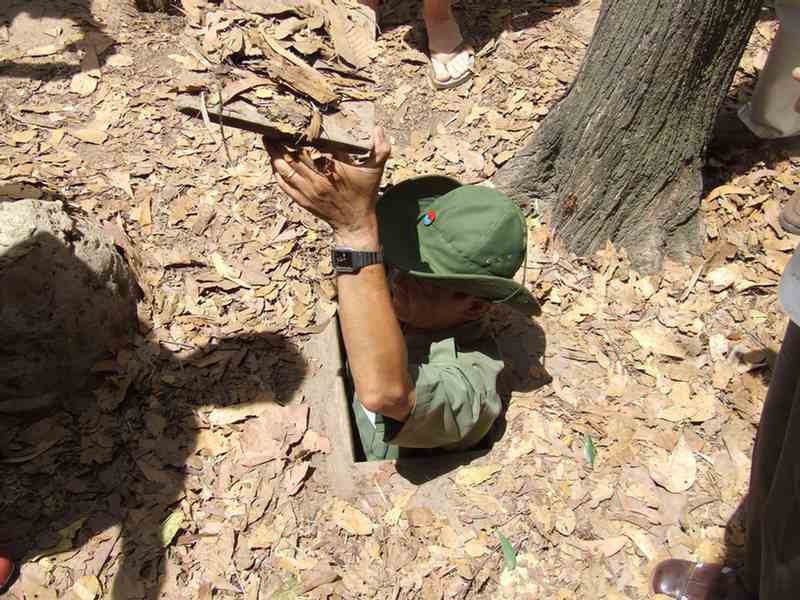
coctail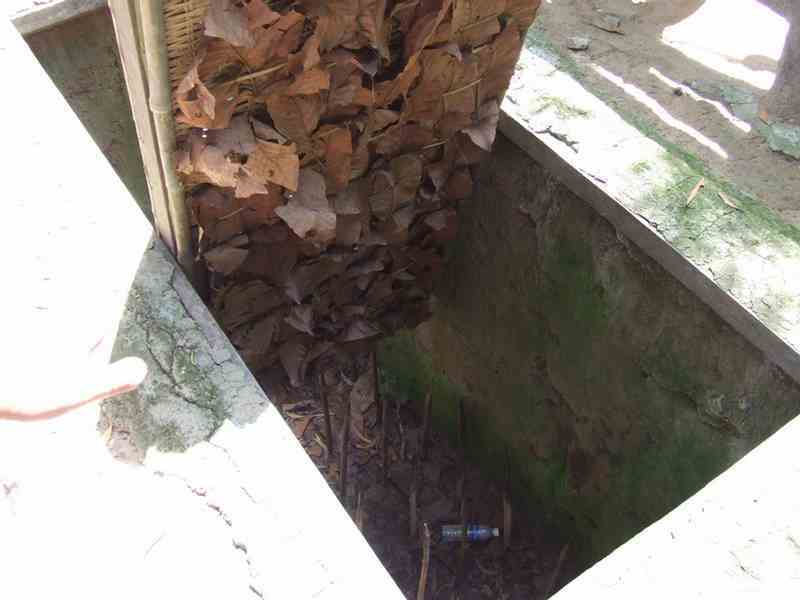
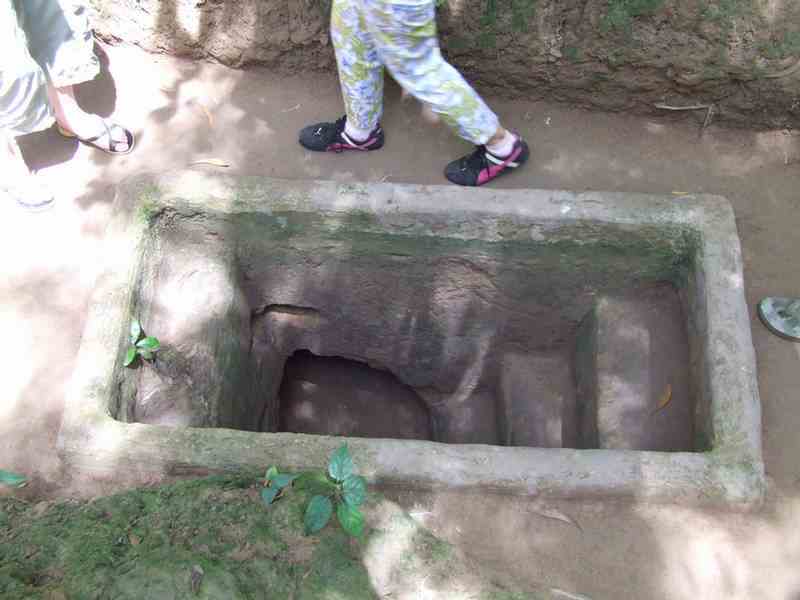
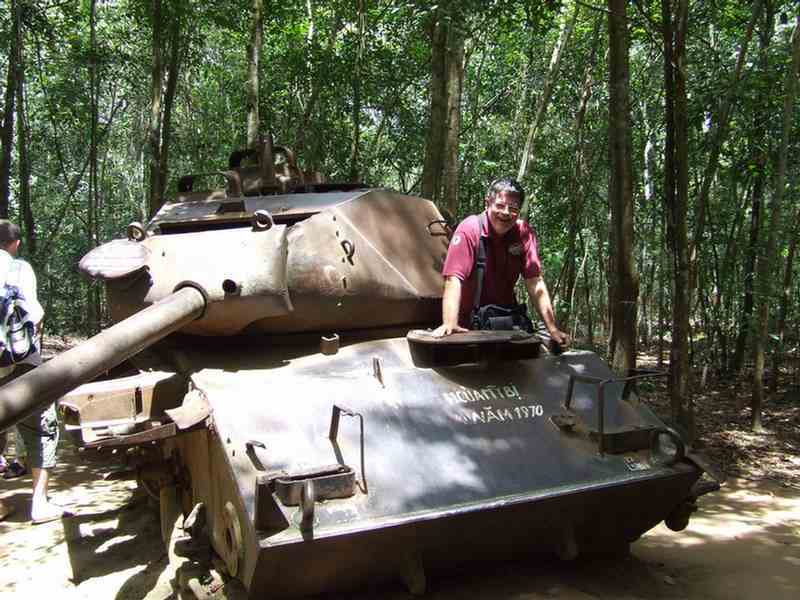
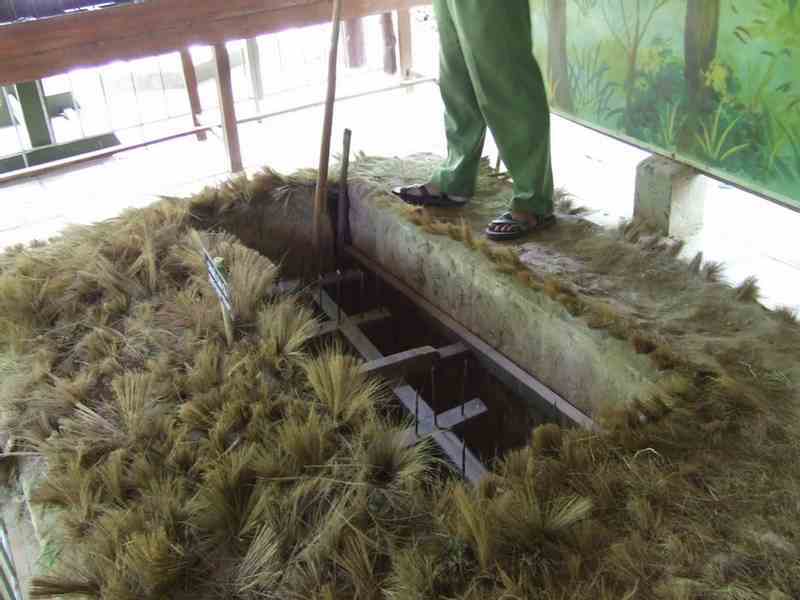
Sandals made from car tyres
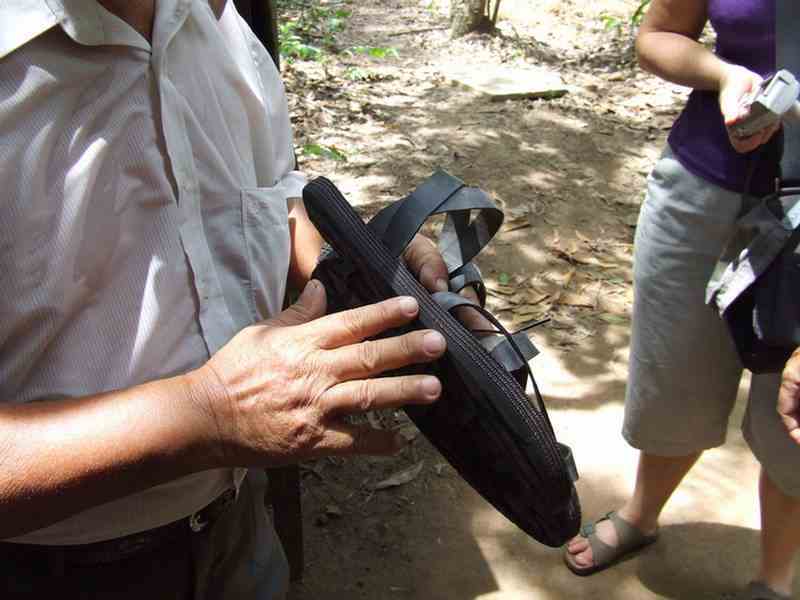
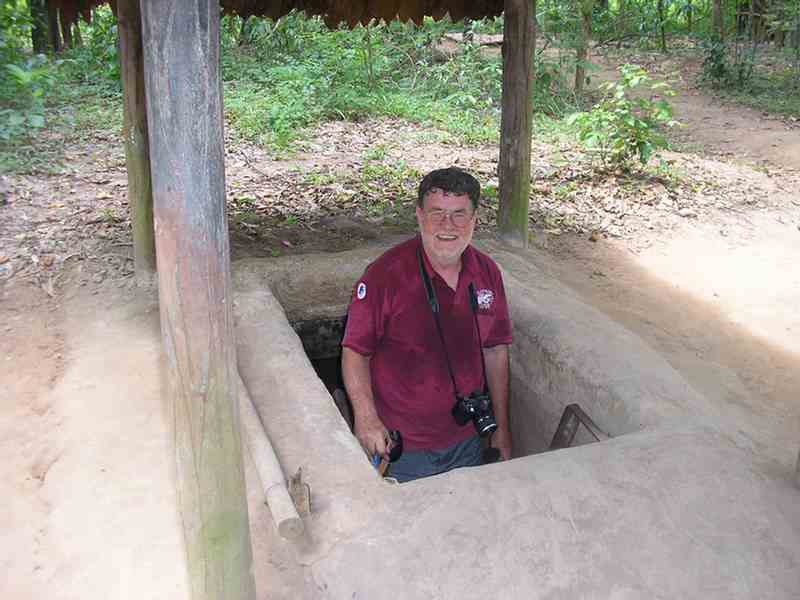
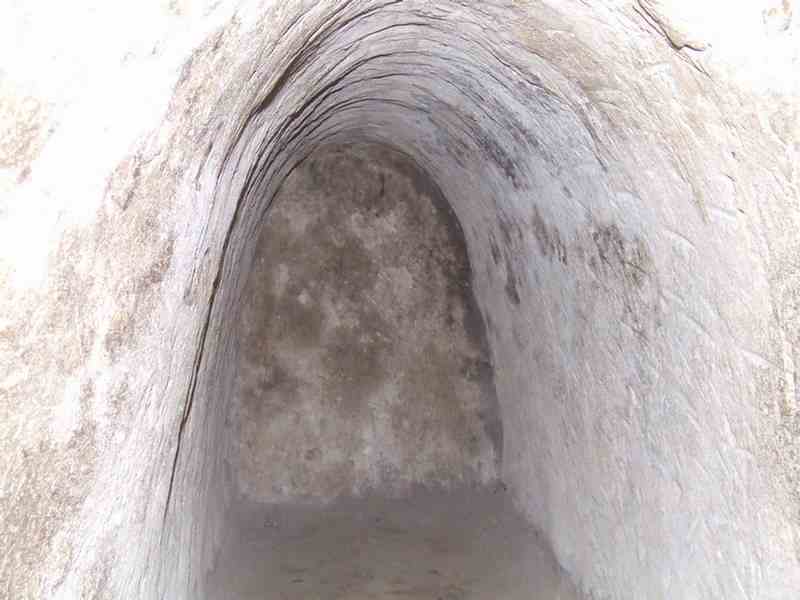
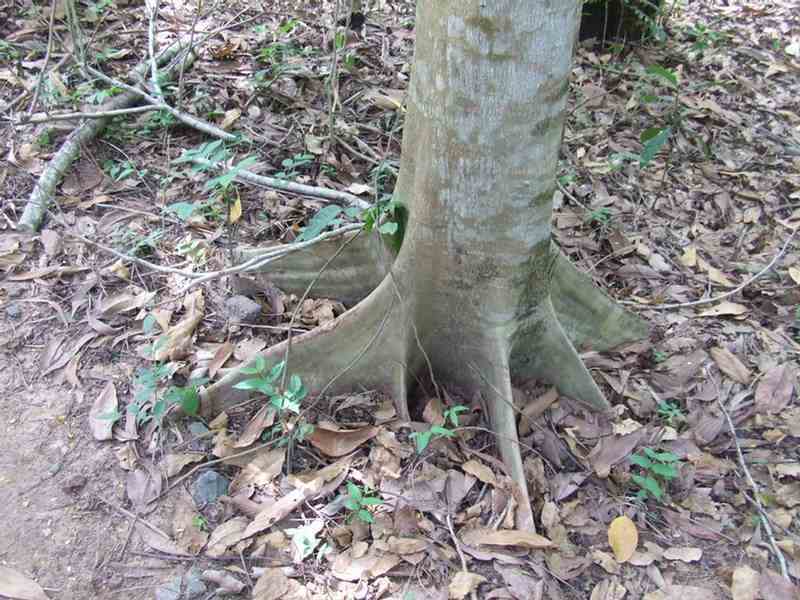
Reunification Palace
The original palace, built here in 1871, named Norodon Palace, was used as a colonial mansion of the
French Governor-General of Indochina. (In 1858, France launched the first attack in Da Nang,
starting its invasion of Vietnam whose conquest was completed in 1867.)
After independence in 1954, Ngo Dinh Diem took it over as his extravagent Presidential Palace.
In 1954, it was extensively damaged in an assassination attempt by 2 pilots from the South Vietnamese Army
and subsequently demolished. (One of the pilots is now the head of Vietnamese Airlines.)
In 1966, the present building was erected and named the Independence Palace by Diem.
It was named the Reunification Palace after the famous incident on April 30th 1975, when 2 tanks smashed
through the front gate and Saigon surrended to Ho Chi Minh's NLF soldiers.
I got there just in time for a tour led by a charming 28yo English-speaking guide whose family name was Nguyen.
(38% of all Vietnamese people have the Nyugen family name - at various times in the past, Vietnamese emperors
have forced their people to take on their names.)
We were taken on an excellent tour of the reception, cabinet, banquet and guest rooms.
I very much liked the simple decor and furnshings of the palace. It was very tastefully done.
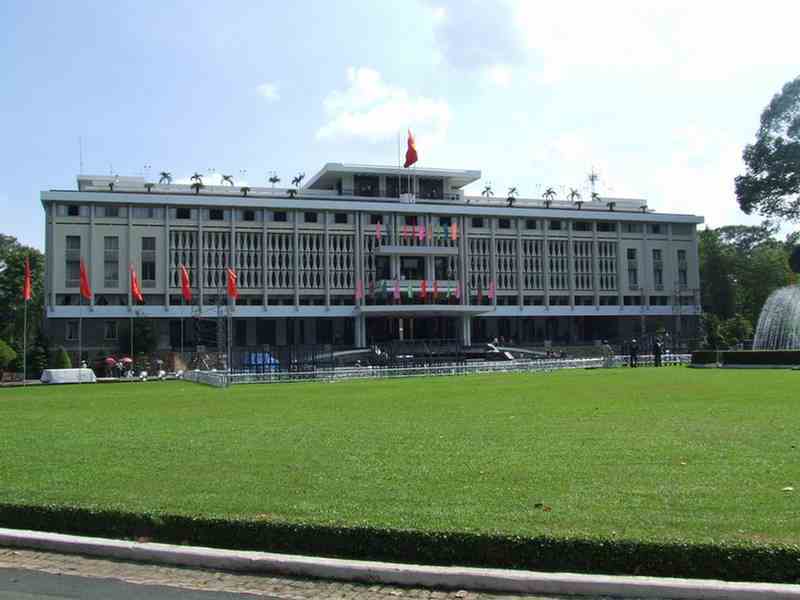
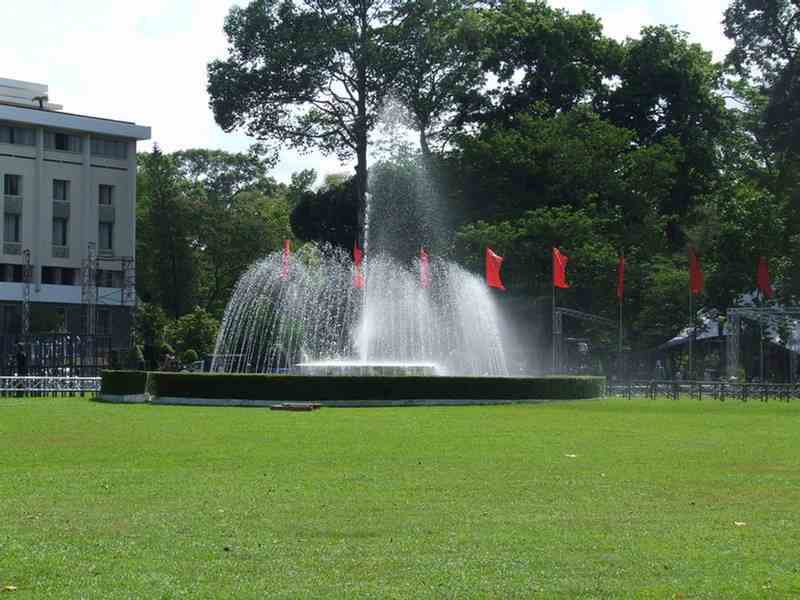
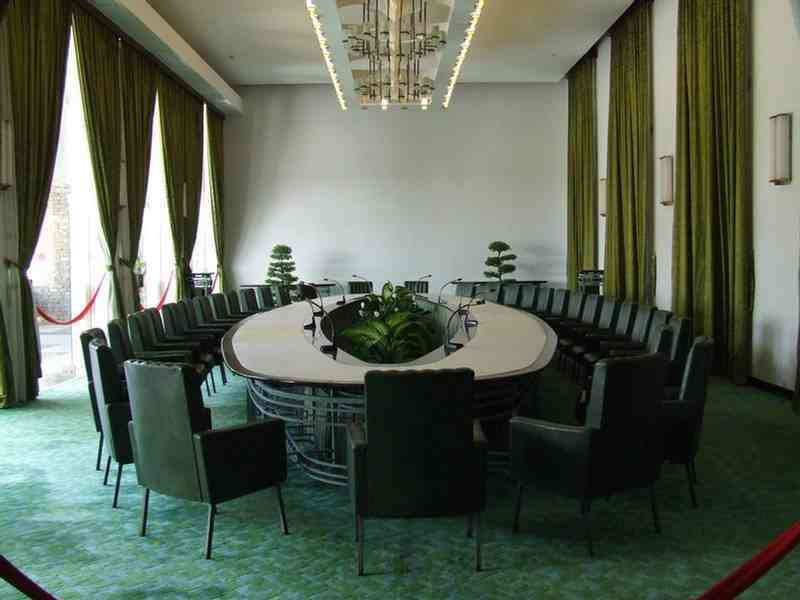
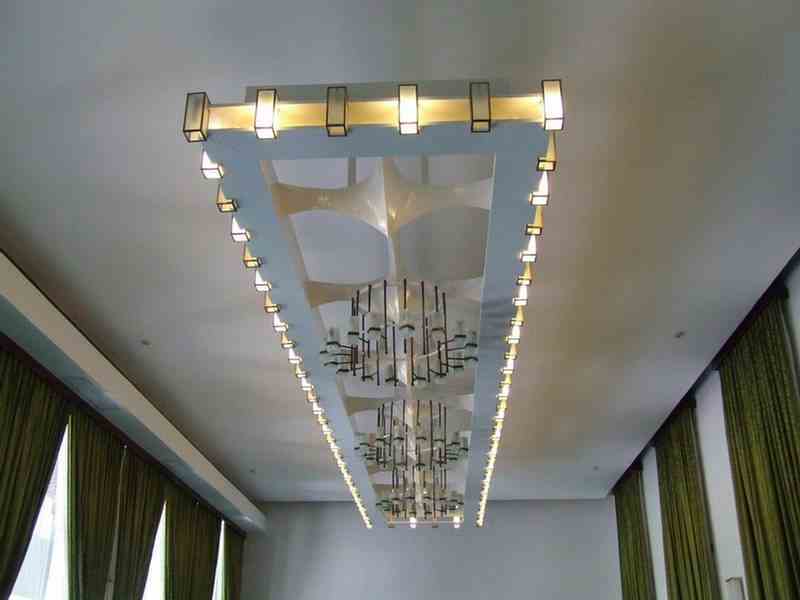
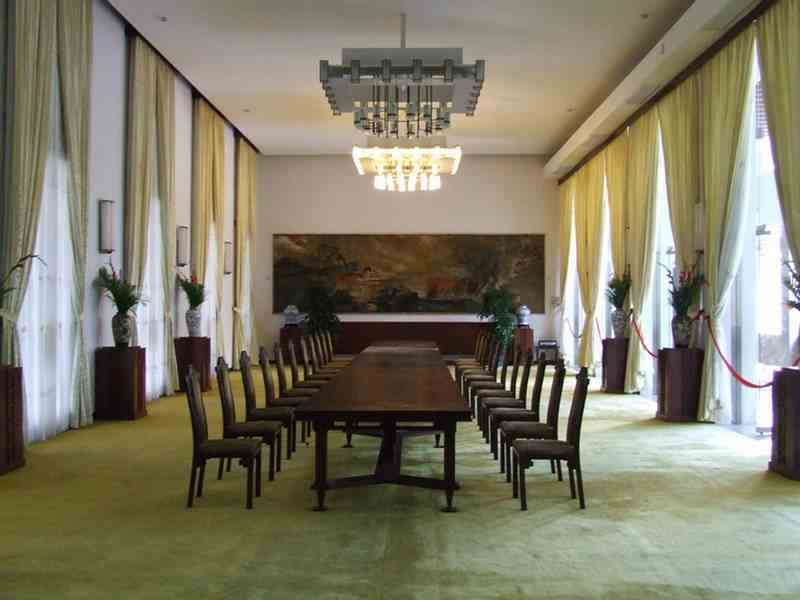
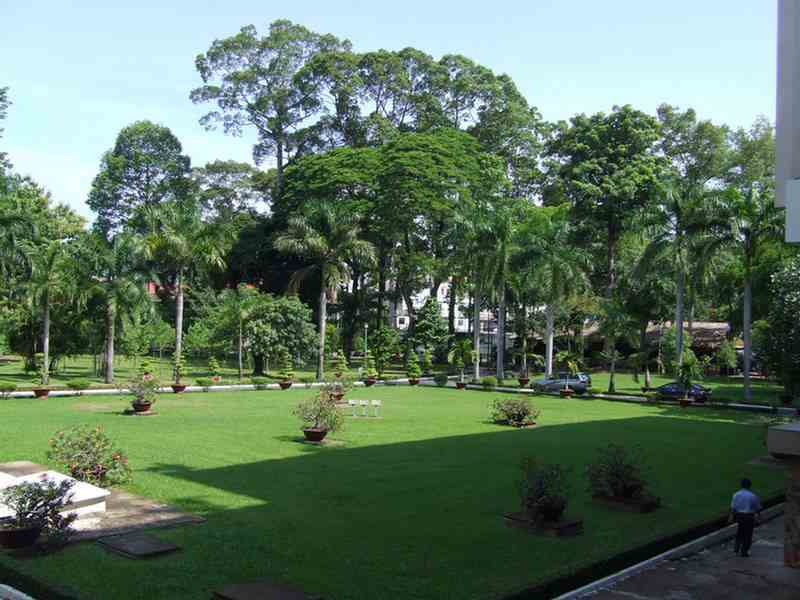
One of the war rooms
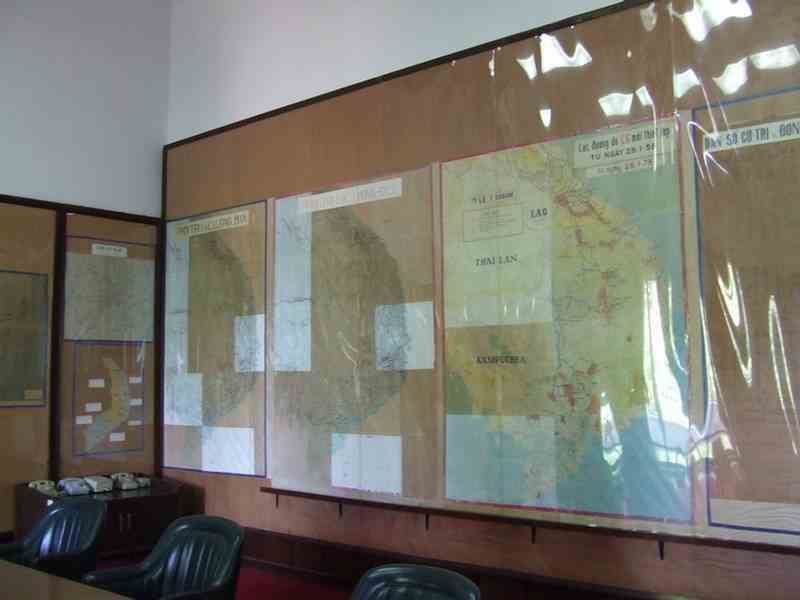
Telephones which had direct connections to Australian, New Zealand and US governments

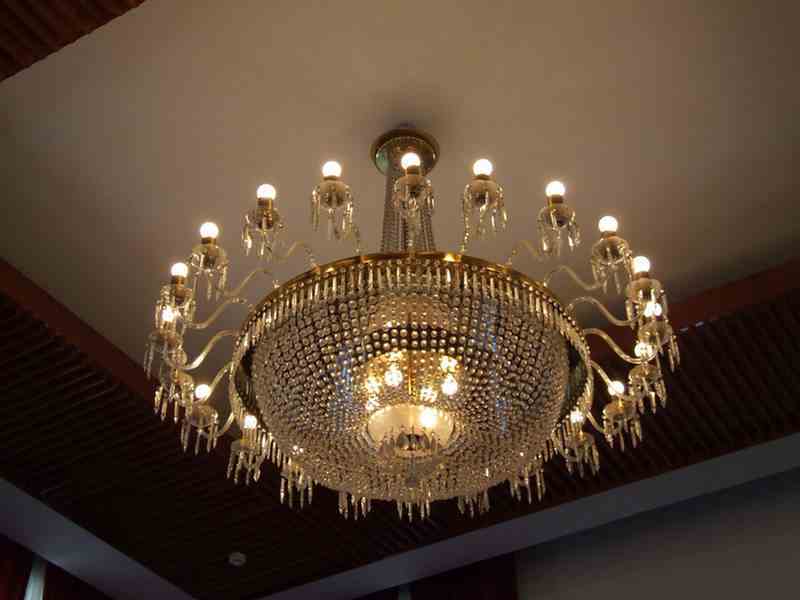

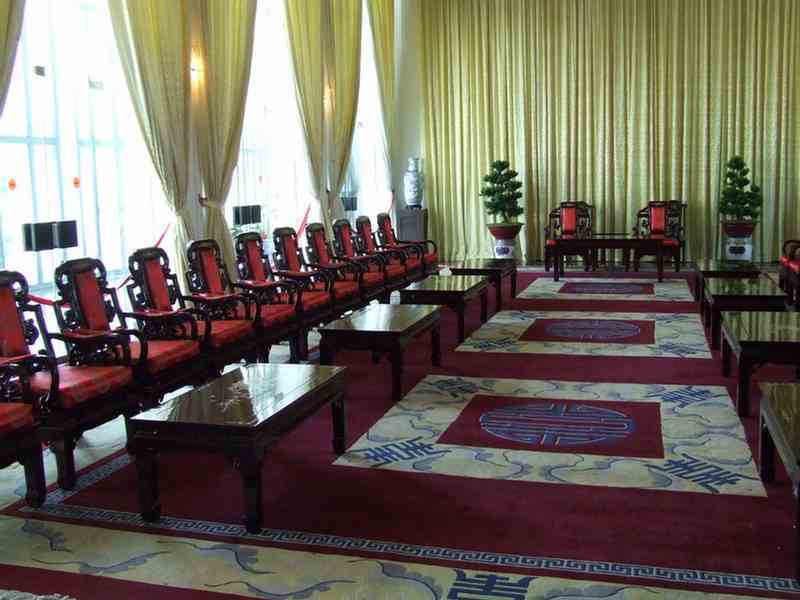
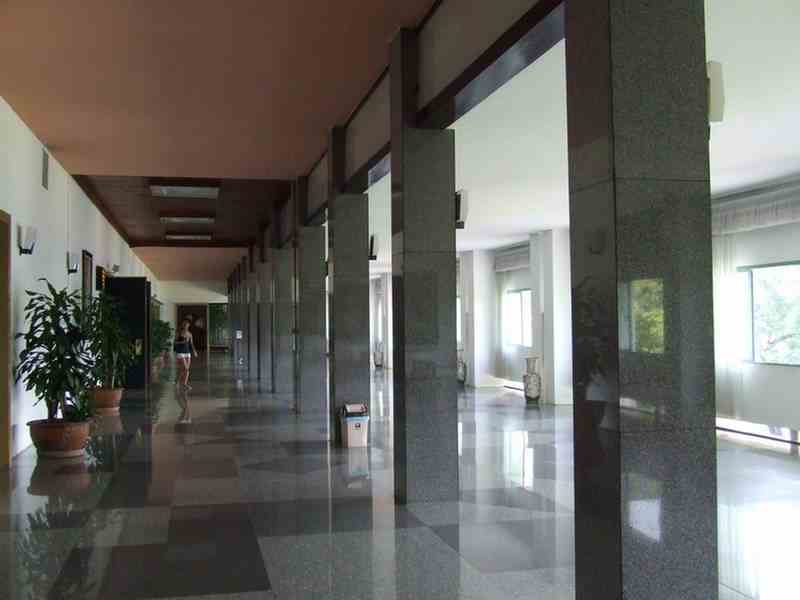
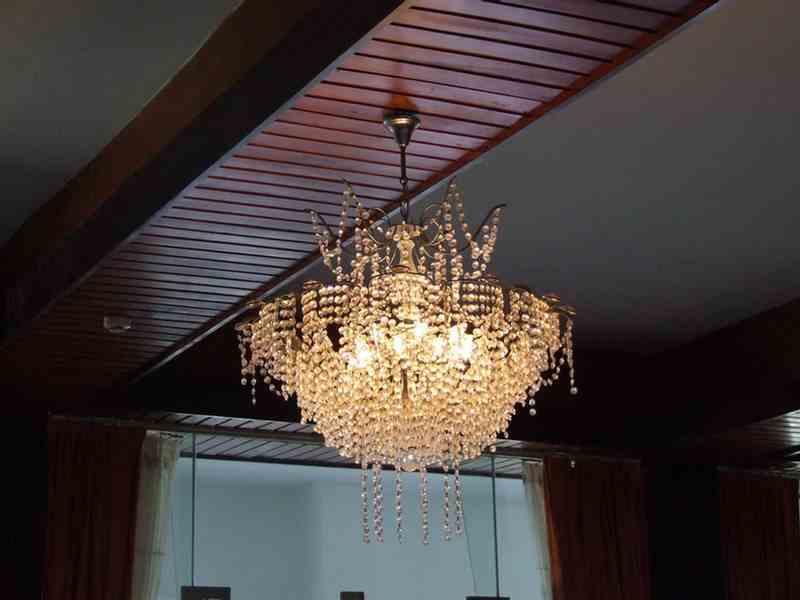
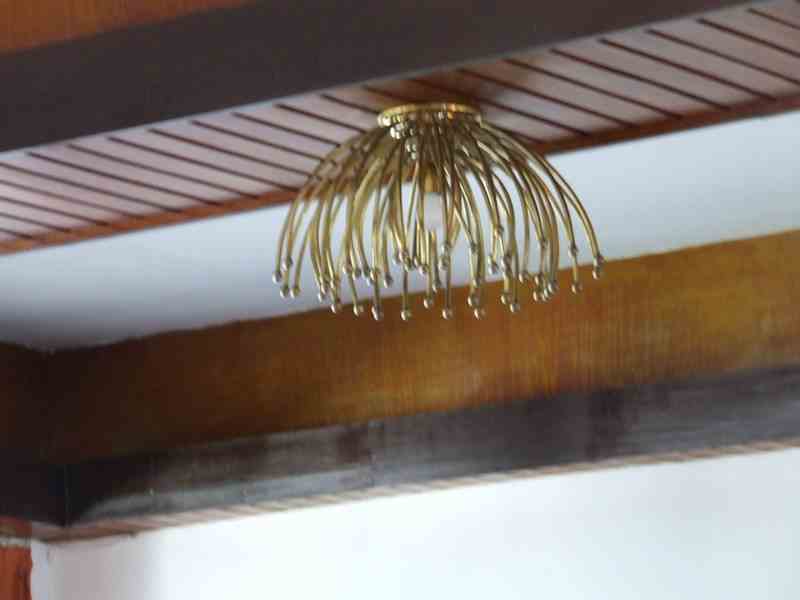
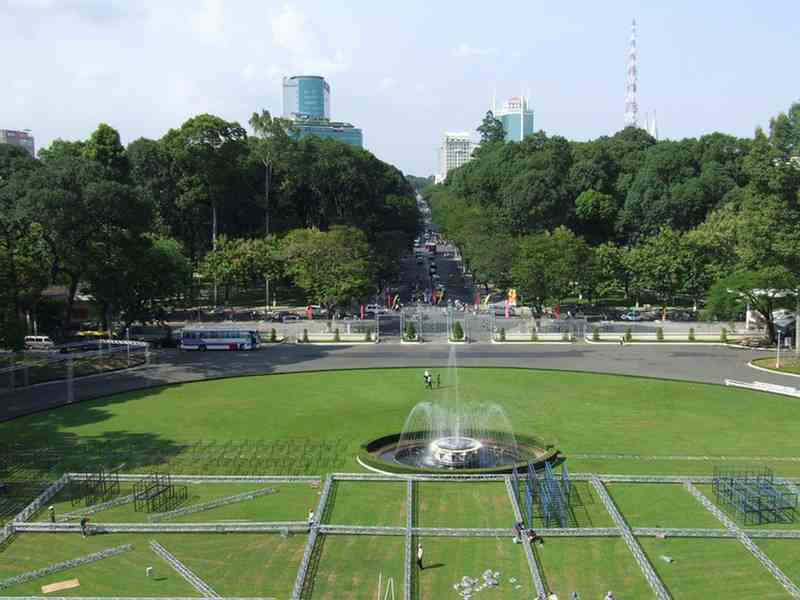
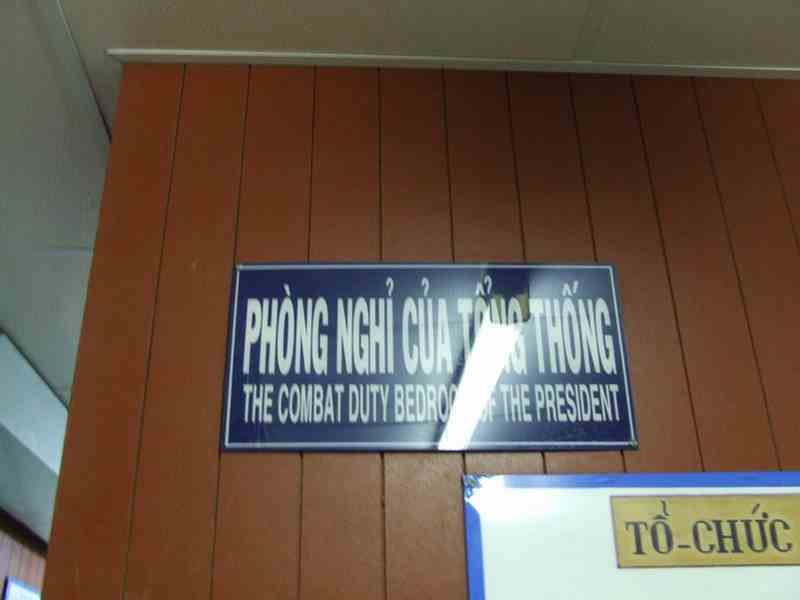
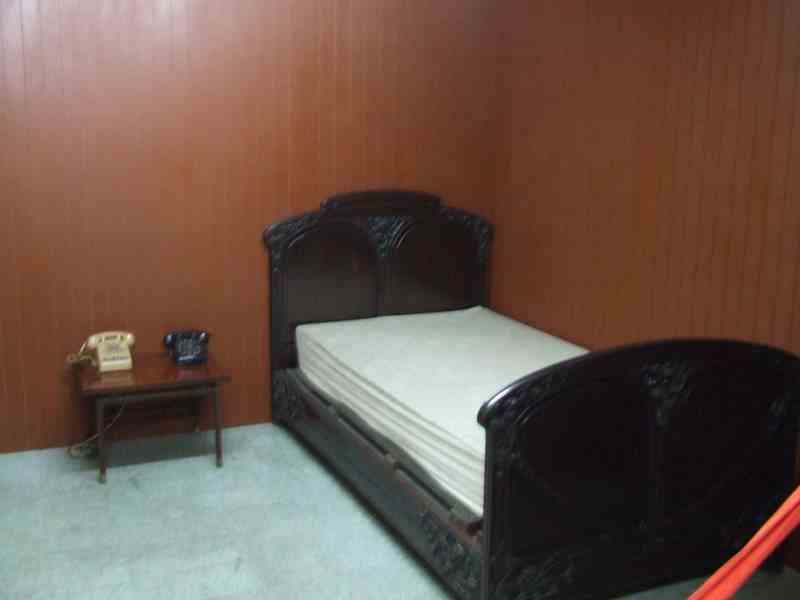

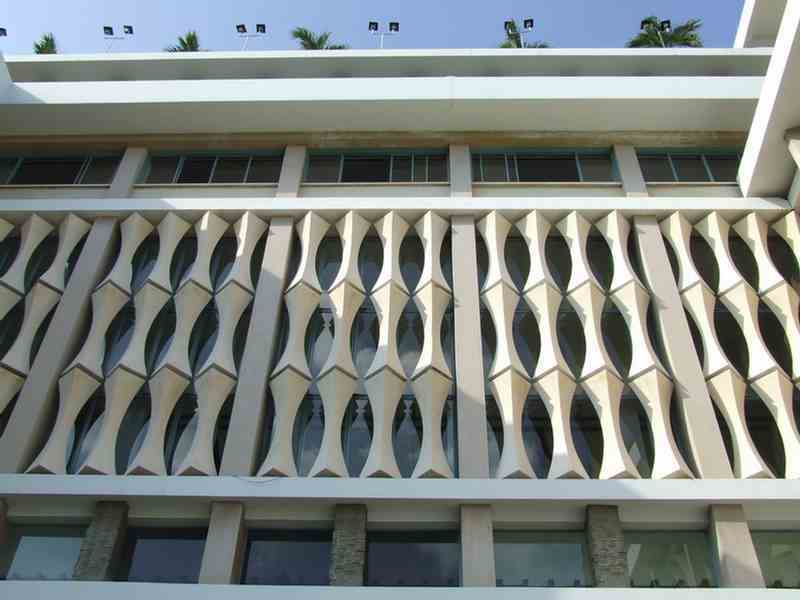
A replicas of one of the tanks that broke through the gates
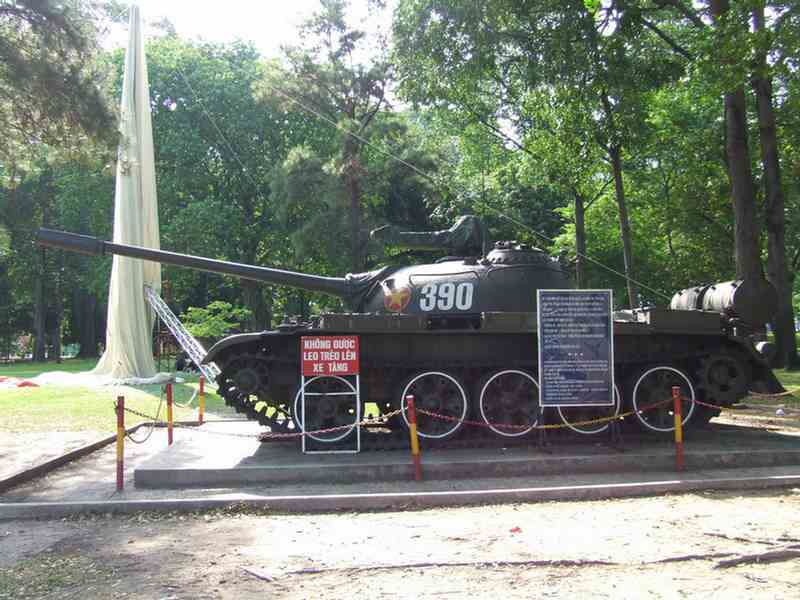
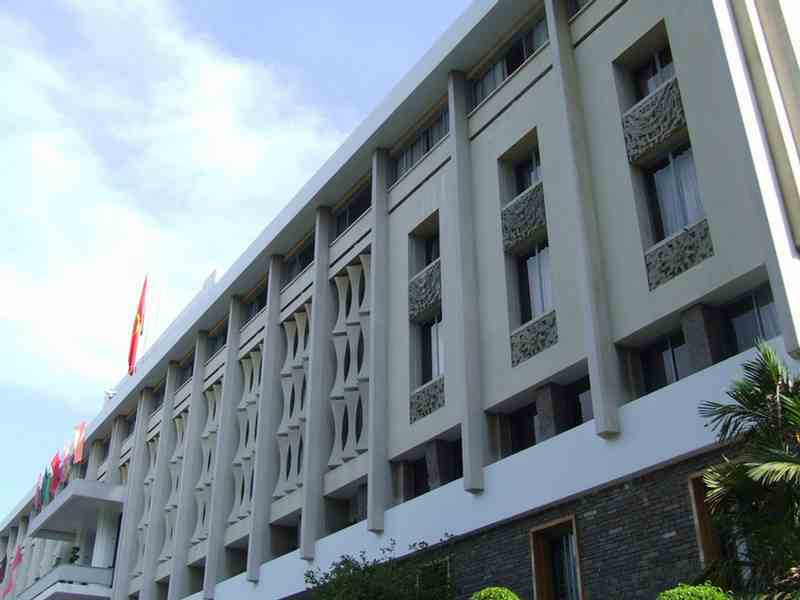
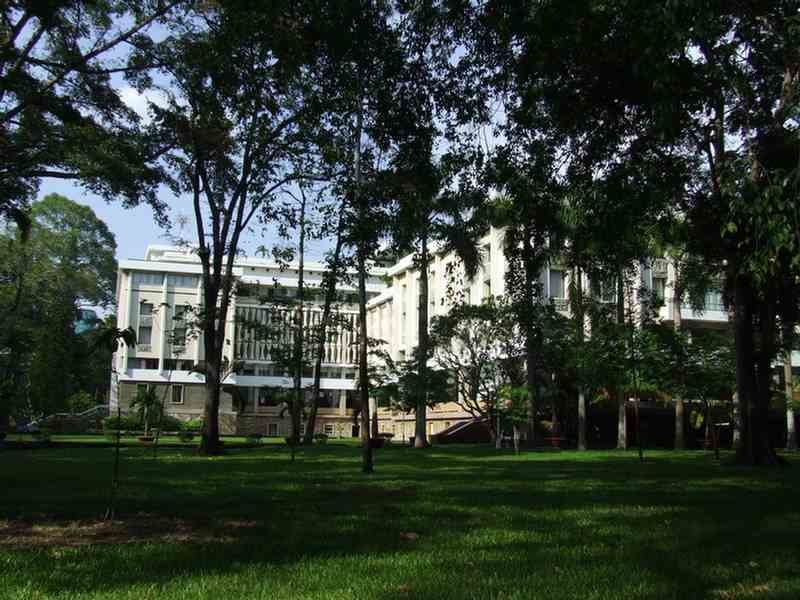
After visiting the Runification Palace I walked though the gardens to the War Remnants Museum.
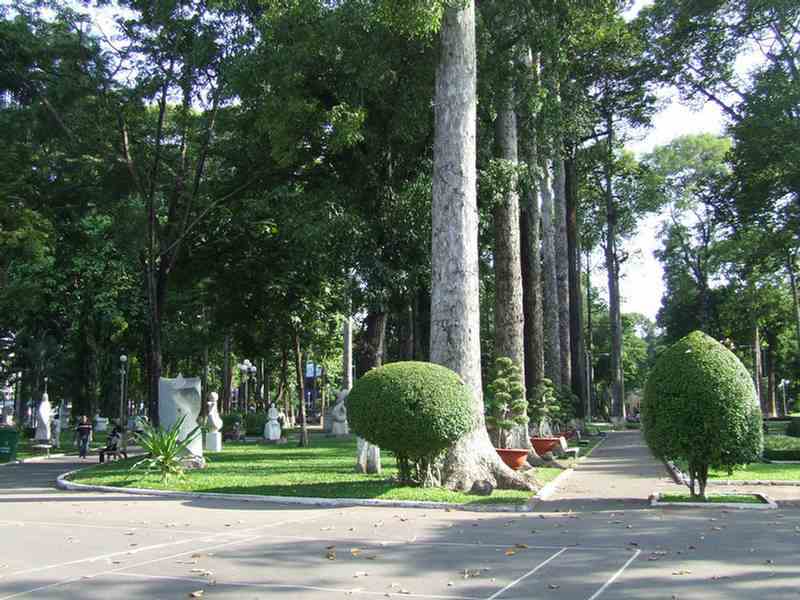
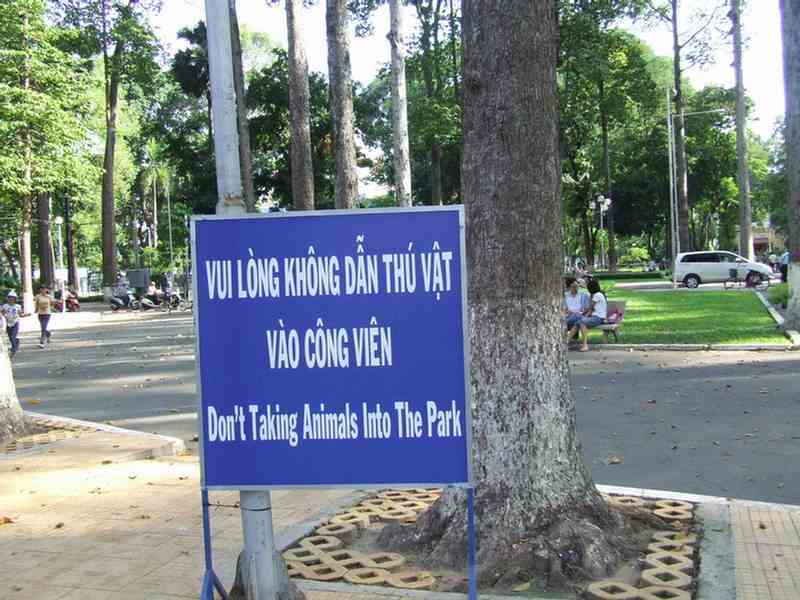
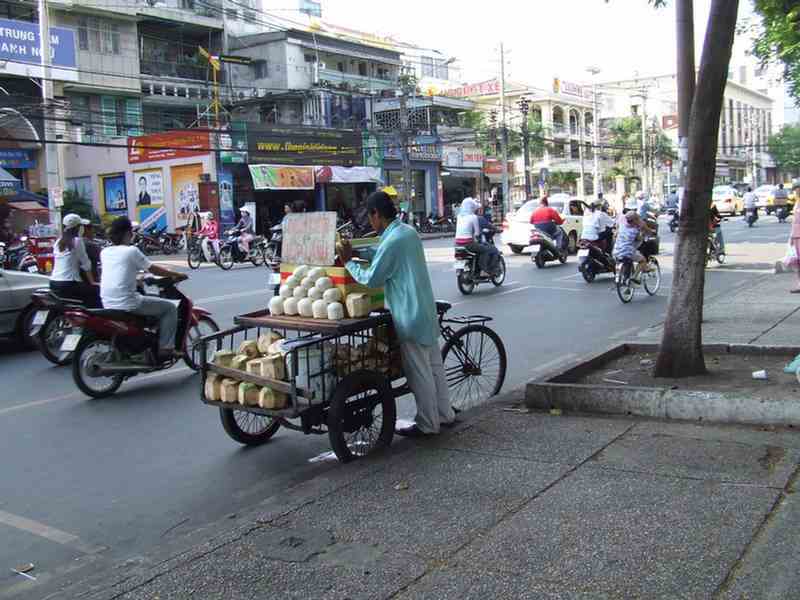
The War Remnants Museum
Unfortunately it was under renovation and there was a limited display.
There was a very anti-USA flavour.
There was a good display about the effects of agent-orange on the Vietnamese people.
The photo collections of Japanese reporters, Ishikana Bunyo and Nakamura Gore - "Vietnam - War and Peace" were on display.
There were captured USA planes, tanks, anti-aircraft guns and bombs on display in the grounds
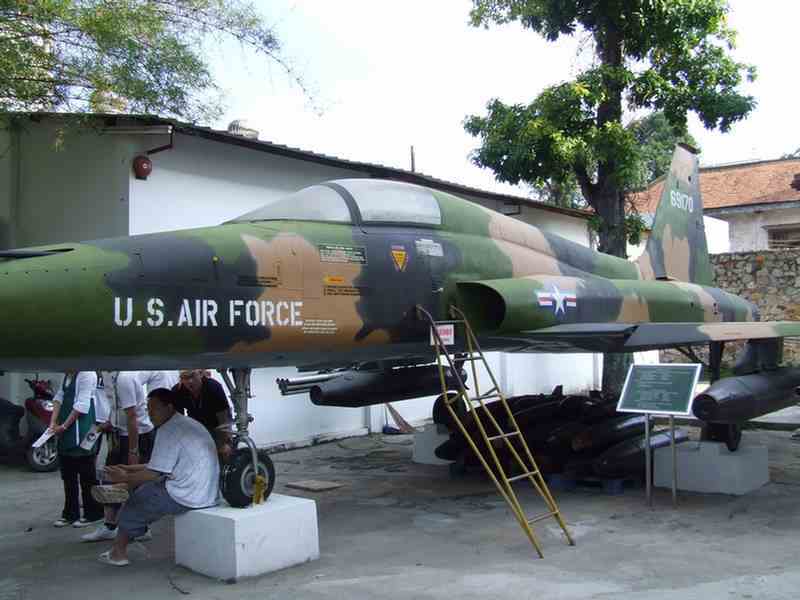


Replicas of "Tiger Cages" used by the French to imprison and torture resistance fighters
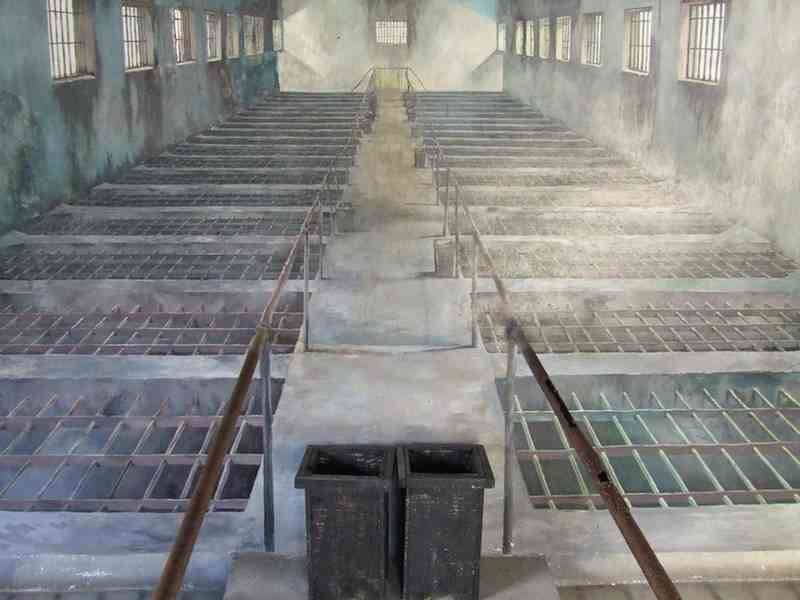
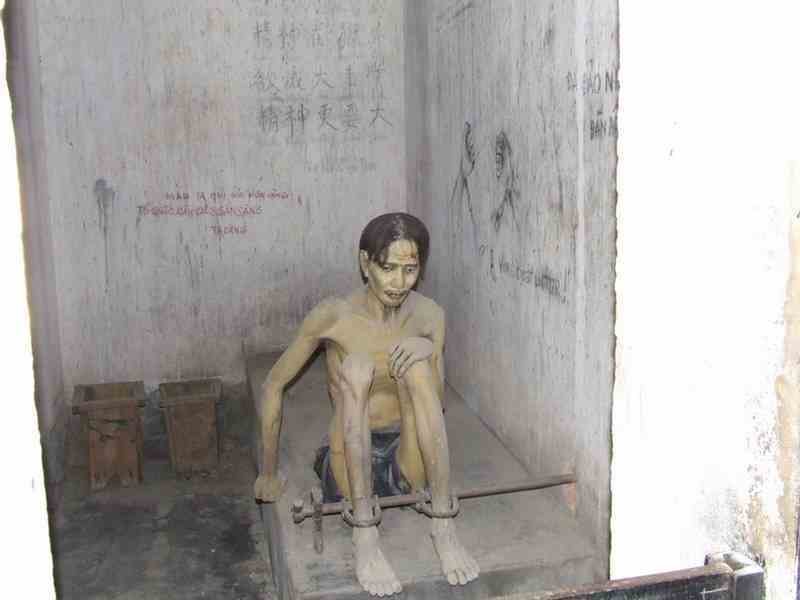
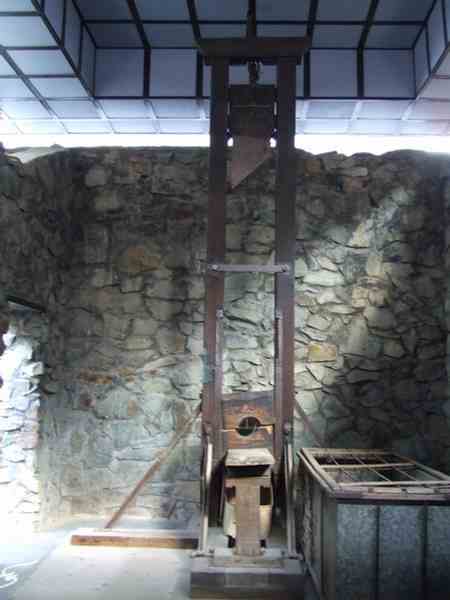

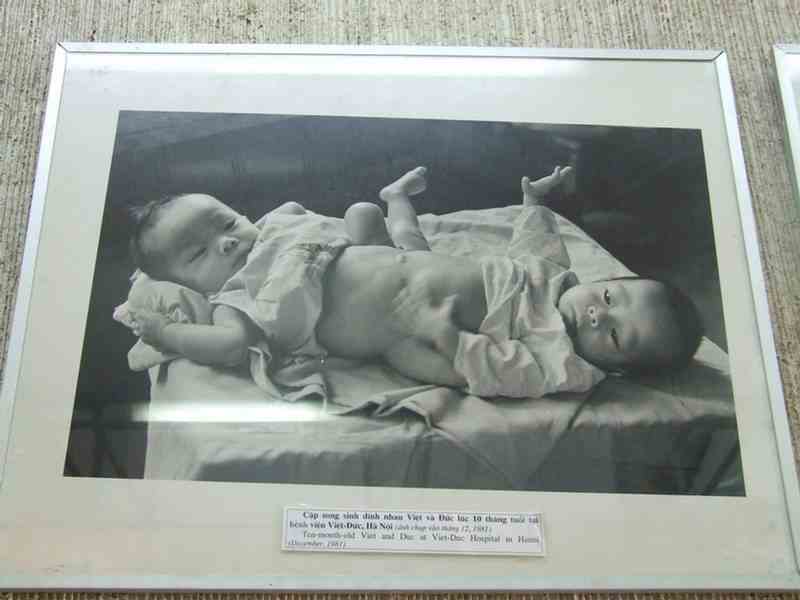
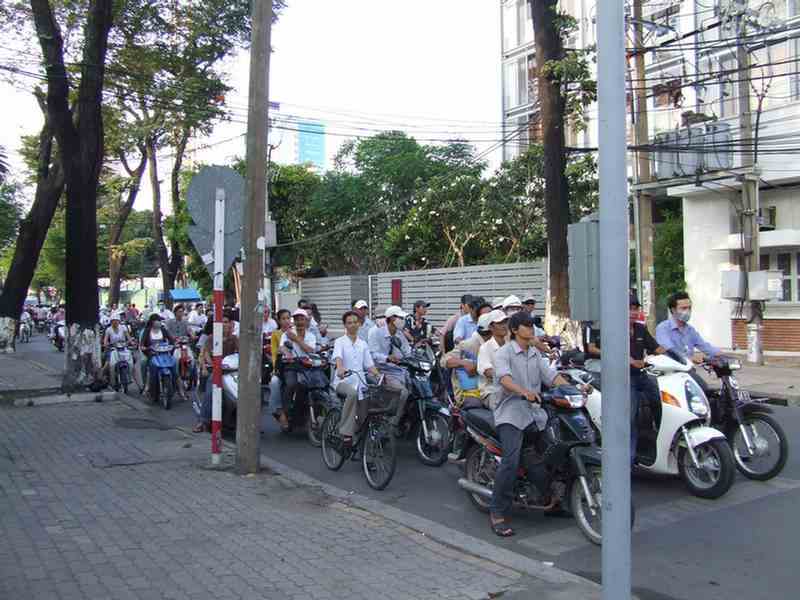
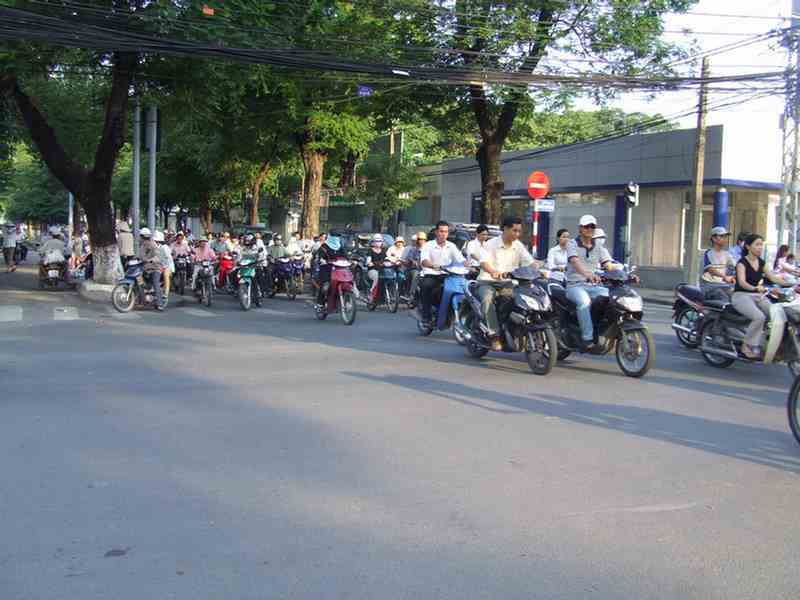
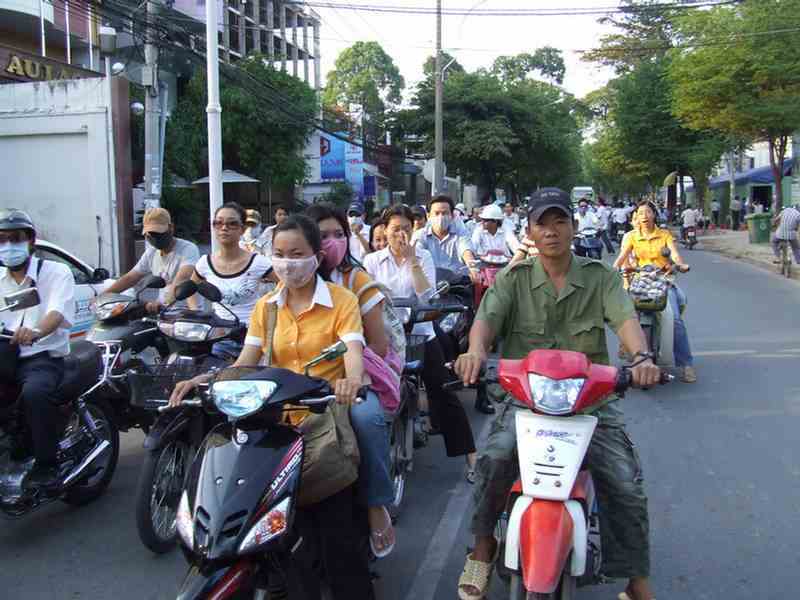
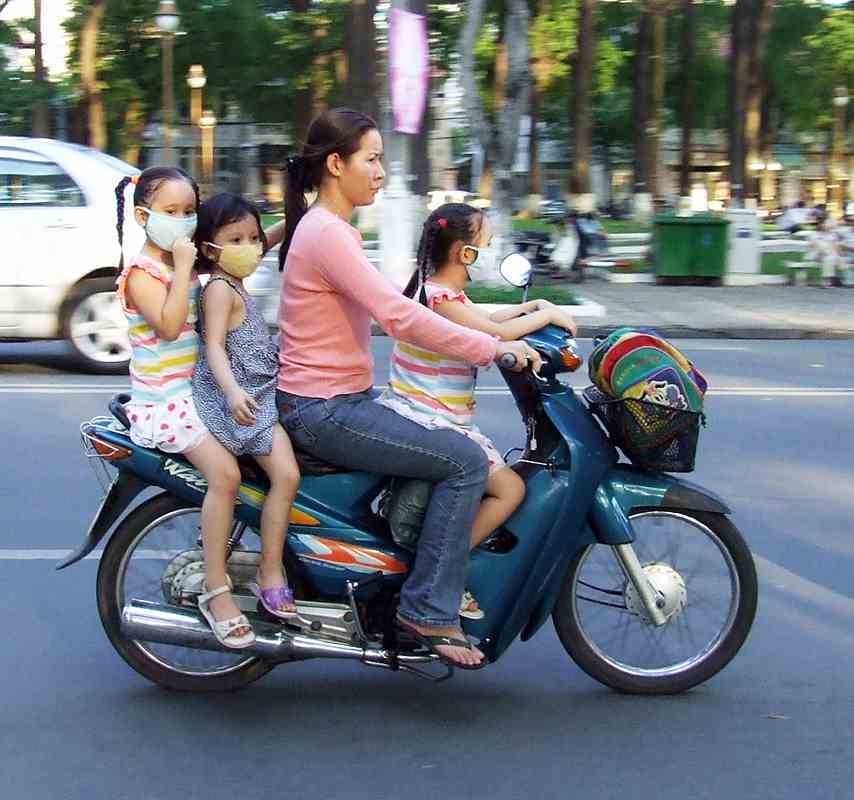

Notre Dame Cathedral
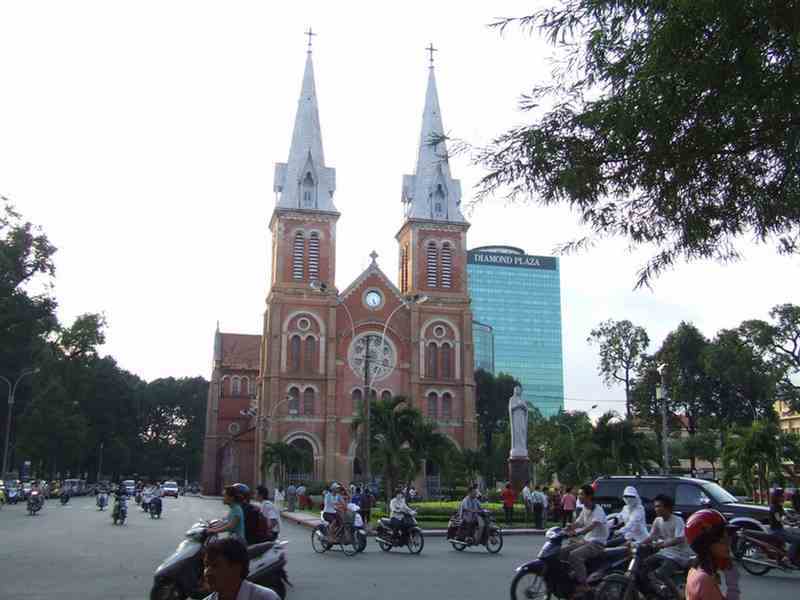
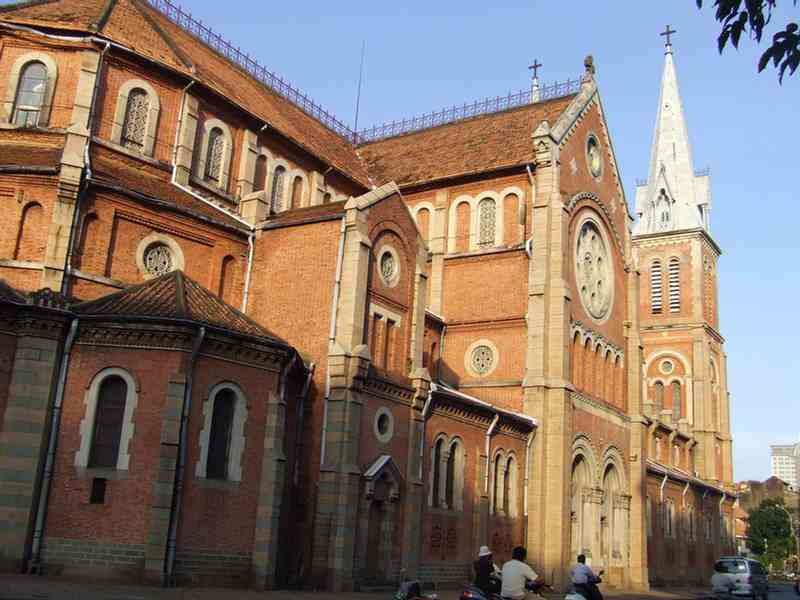
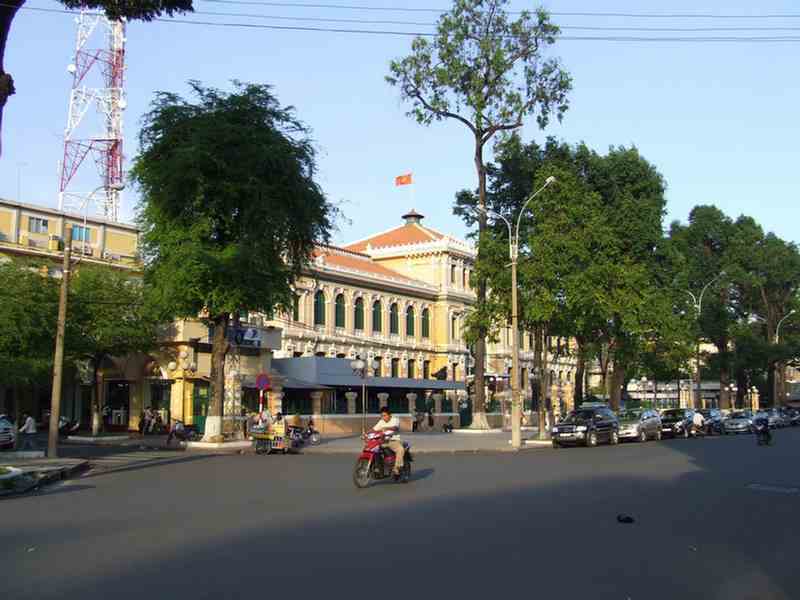
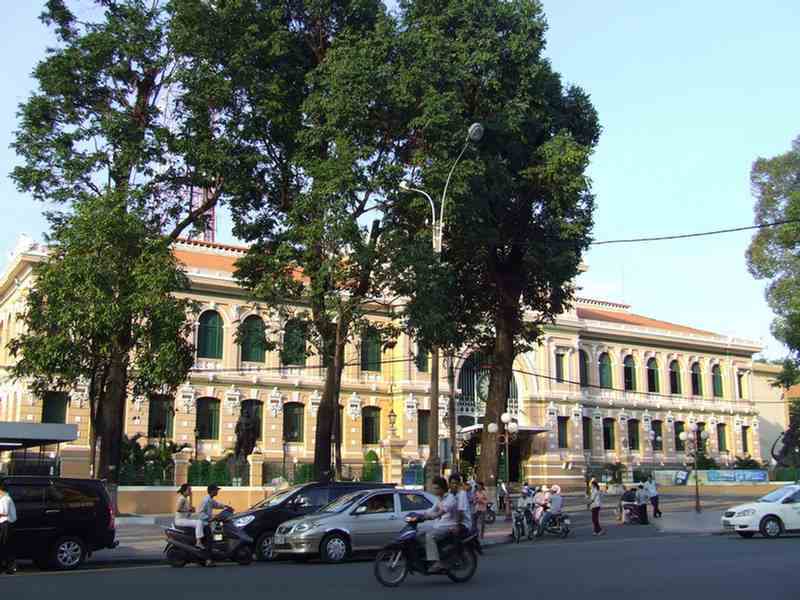

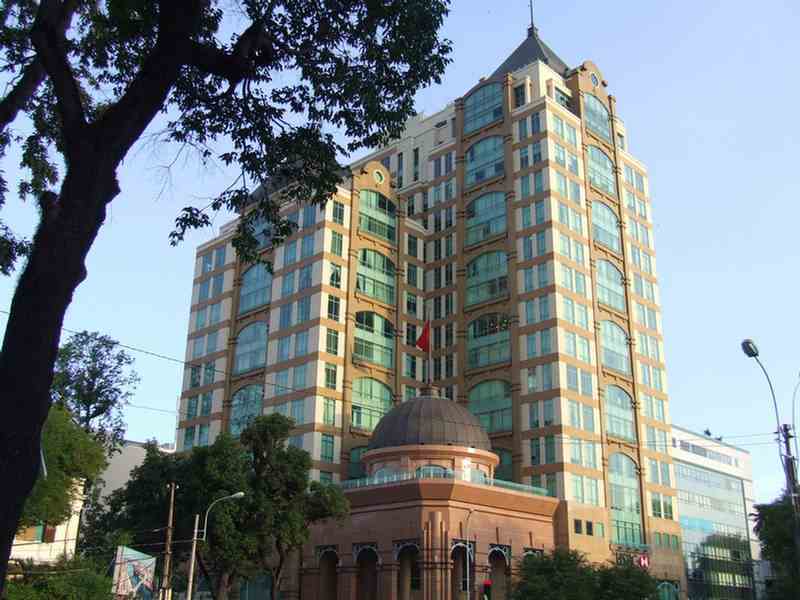
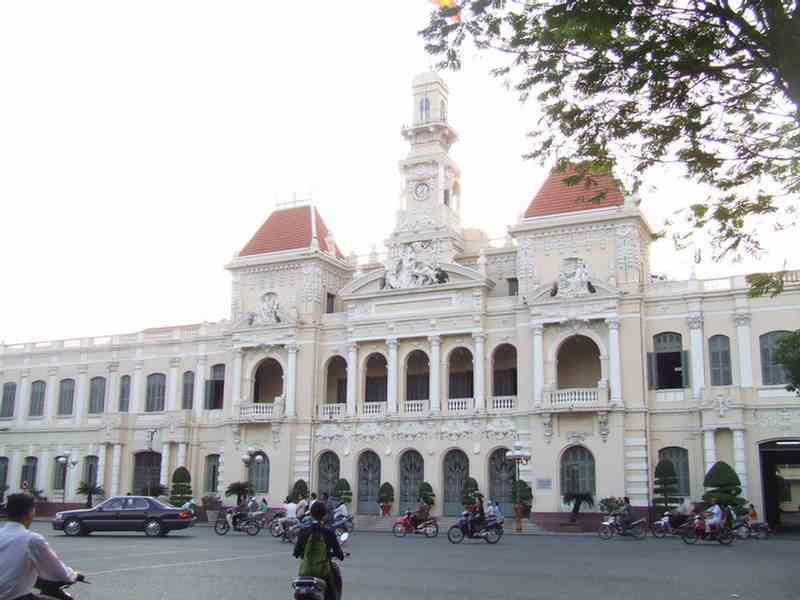
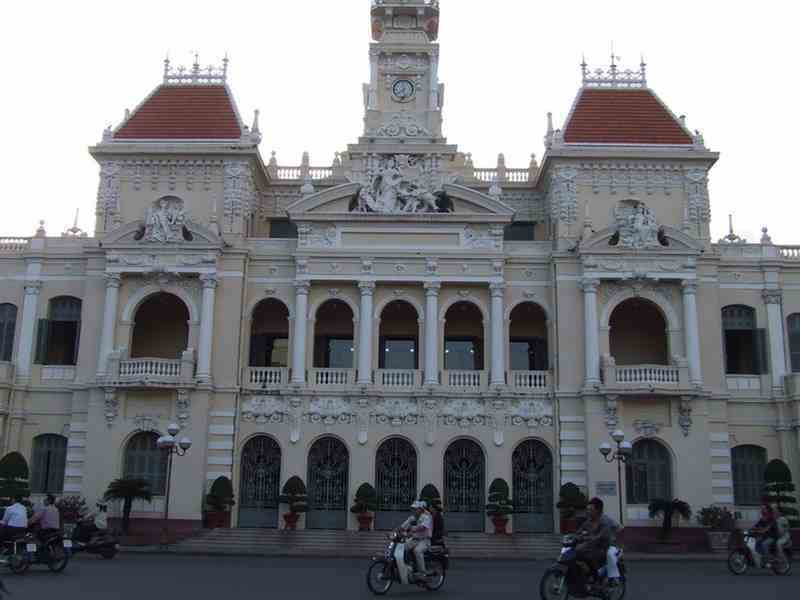
After 11 days in Vietnam we headed by public bus, (the only one used by IntrepidTravel on this trip), to the Cambodian border.
It simplified the task of getting the Cambodian visa ($30) as the conductor on the bus did all the paperwork.
The Cambodian border
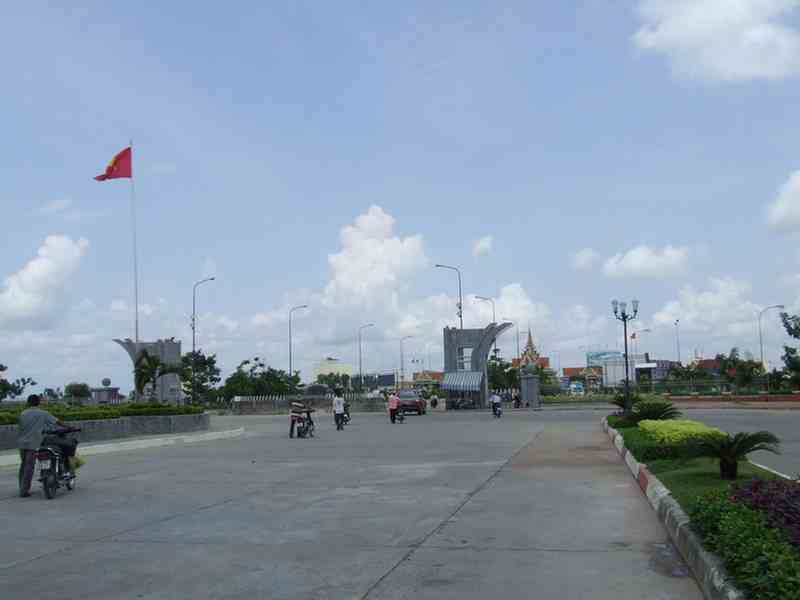

I had a 4-week Indochina trip in May-June 2007.
(Melbourne – Bangkok – Thailand – Laos - Vietnam - Cambodia -Thailand – Bangkok - Melbourne)
We flew from Hoi An to Ho Chi Minh City.
Ho Chi Minh City has gone by several different names during its history, reflecting settlement by different ethnic, cultural and political groups. It was originally a trading port city of the Khmer Empire known as Prey Nokor.
In time, under the control of the Vietnamese, it was officially renamed Gia Dinh,
a name that was retained until the time of the French conquest in the 1860s, when it adopted the name Sài Gòn, westernized as Saïgon.
The current name, Ho Chi Minh City, was given after the fall of Saigon in 1975.
With a population of 15 million it is the most populous city in Vietnam.
Ho Chi Minh City is the financial centre of Vietnam and is the headquarters of many national and international banks and companies.

There are some fine buildings in the heart of Saigon.
After we arrived in Saigon we went on a cyclo ride to have a look at some of them.








Saigon Opera House ( Now the Ho Chi Minh Municipal Theatre)
This magnificent building was built at the turn of the 20th century as a classical opera house to entertain French colonists.
The building was renovated in the 1940s, only to be badly damaged by bombers in 1944. A shelter for refugees after
the Geneva Accord split the country at the 17th Parallel in 1954, the building would briefly house the parliament before
falling under first private, and ultimately state, hands (after reunification) as an opera house and theatre.
The three-story interior houses some 1,800 seats.


The Cambodian borderThe Cambodian border



The Central Post Office (or Buu Dien Truong Tam) is built like an old fashioned railway station.





The Rex Hotel
This was where the journalists were briefed at 5pm each day during the Vietnam War.
(Five o'clock follies)
The journalists used to watch the passing parade from the open bar on the top floor.
We had a cocktail there to celebrate history. I had a Saigon Cocktail - $3.50 - very citrus.






Cu Chi Tunnels
The tunnels of Củ Chi are an immense network of connecting underground tunnels located in the Cu Chi district about 70km
from Ho Chi Minh City. They are part of a much larger network of tunnels that underlie much of the country.
The Củ Chi tunnels were the location of several military campaigns during the Vietnam War, and were the National Front for the Liberation of South Vietnam's base of operations for the Tet Offensive in 1968.
The tunnels were used by NLF guerrillas as hiding spots during combat, as well as serving as communication and
supply routes, hospitals, food and weapon caches and living quarters for numerous guerrilla fighters.
In the beginning, there was never a direct order to build the tunnels; instead, they developed in response
to a number of different circumstances, most importantly the military tactics of the French and U.S.
The tunnels began in 1948 so that the Viet Minh could hide from French air and ground sweeps.
Each hamlet built their own underground communications route through the hard clay, and over the years,
the separate tunnels were slowly and meticulously connected and fortified.
By 1965, there were over 200 kilometers of connected tunnels. As the tunnel system grew, so did its complexity.
Sleeping chambers, kitchens and wells were built to house and feed the growing number of residents and
rudimentary hospitals created to treat the wounded.
Most of the supplies used to build and maintain the tunnels were stolen or scavenged from U.S. bases or troops.
For the NLF, life in the tunnels was difficult. Air, food and water were scarce and the tunnels
were infested with ants, poisonous centipedes, spiders and mosquitoes.
Most of the time, guerrillas would spend the day in the tunnels working or resting and
come out only at night to scavenge supplies, tend their crops or engage the enemy in battle.
Sometimes, during periods of heavy bombing or American troop movement, they would be forced
to remain underground for many days at a time.
Sickness was rampant among the people living in the tunnels, especially malaria,
which accounted for the second largest cause of death next to battle wounds.
A captured NLF report suggests that at any given time half of a PLAF unit had malaria
and that “one-hundred percent had intestinal parasites of significance.

coctail




Sandals made from car tyres




Reunification Palace
The original palace, built here in 1871, named Norodon Palace, was used as a colonial mansion of the
French Governor-General of Indochina. (In 1858, France launched the first attack in Da Nang,
starting its invasion of Vietnam whose conquest was completed in 1867.)
After independence in 1954, Ngo Dinh Diem took it over as his extravagent Presidential Palace.
In 1954, it was extensively damaged in an assassination attempt by 2 pilots from the South Vietnamese Army
and subsequently demolished. (One of the pilots is now the head of Vietnamese Airlines.)
In 1966, the present building was erected and named the Independence Palace by Diem.
It was named the Reunification Palace after the famous incident on April 30th 1975, when 2 tanks smashed
through the front gate and Saigon surrended to Ho Chi Minh's NLF soldiers.
I got there just in time for a tour led by a charming 28yo English-speaking guide whose family name was Nguyen.
(38% of all Vietnamese people have the Nyugen family name - at various times in the past, Vietnamese emperors
have forced their people to take on their names.)
We were taken on an excellent tour of the reception, cabinet, banquet and guest rooms.
I very much liked the simple decor and furnshings of the palace. It was very tastefully done.






One of the war rooms

Telephones which had direct connections to Australian, New Zealand and US governments












A replicas of one of the tanks that broke through the gates



After visiting the Runification Palace I walked though the gardens to the War Remnants Museum.



The War Remnants Museum
Unfortunately it was under renovation and there was a limited display.
There was a very anti-USA flavour.
There was a good display about the effects of agent-orange on the Vietnamese people.
The photo collections of Japanese reporters, Ishikana Bunyo and Nakamura Gore - "Vietnam - War and Peace" were on display.
There were captured USA planes, tanks, anti-aircraft guns and bombs on display in the grounds



Replicas of "Tiger Cages" used by the French to imprison and torture resistance fighters










Notre Dame Cathedral








After 11 days in Vietnam we headed by public bus, (the only one used by IntrepidTravel on this trip), to the Cambodian border.
It simplified the task of getting the Cambodian visa ($30) as the conductor on the bus did all the paperwork.
The Cambodian border
